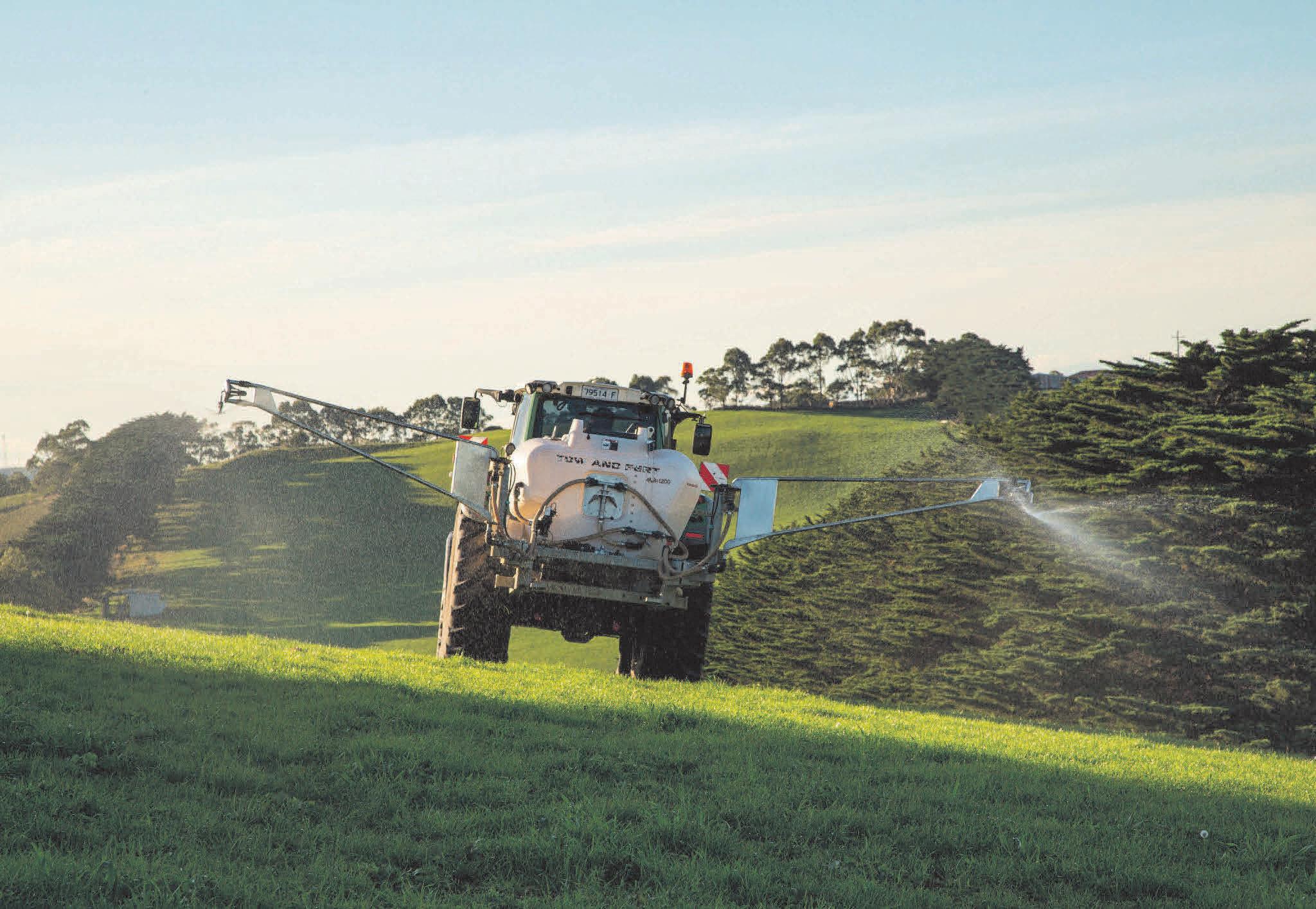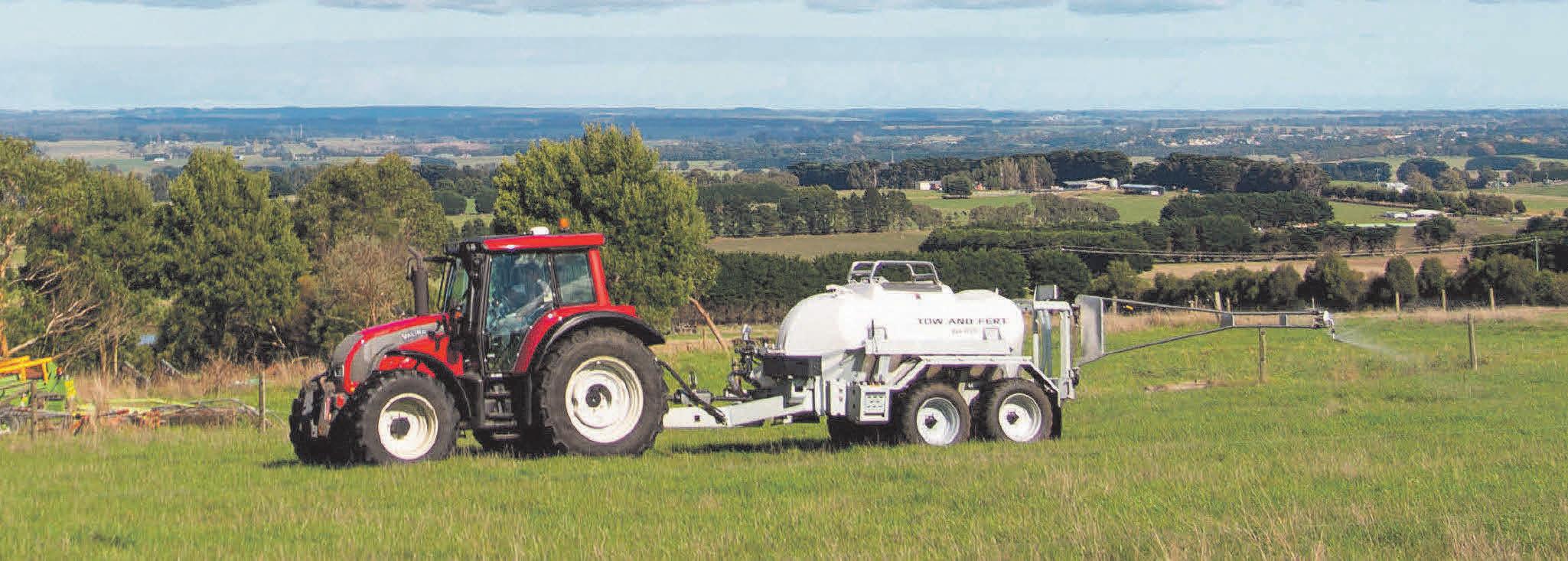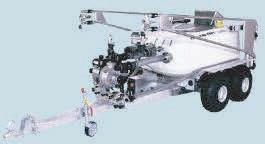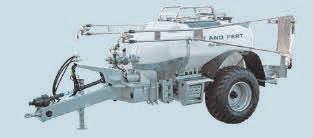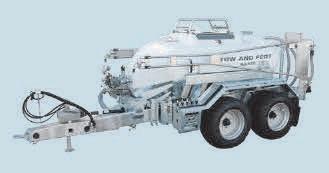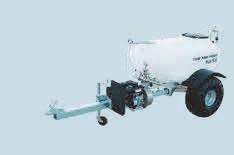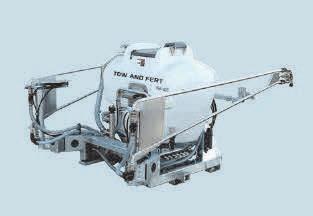











































 BY ISABEL DANDO
BY ISABEL DANDO
SUPPLEMENTARY FEED is an important input for dairy farm operations and can be one of the largest production costs a farm can incur.
Many farmers across the Australian dairying regions are increasingly looking to incorporate other feed types to meet nutrient deficits, one of which is feeding by-products.
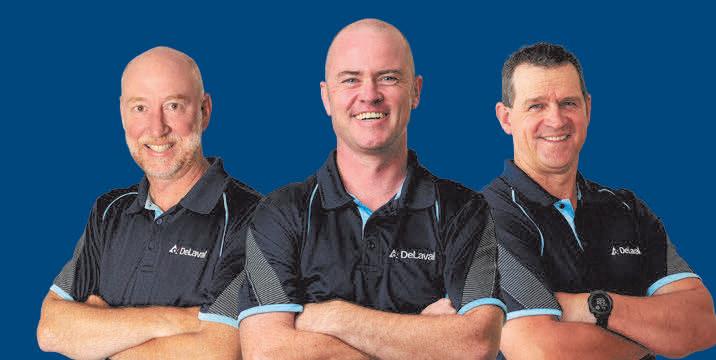

Results from the 2023 National Dairy Farmer Survey (NDFS) show that 12 per cent of farmers in Victoria fed their milking herd feed by-products in the last year.


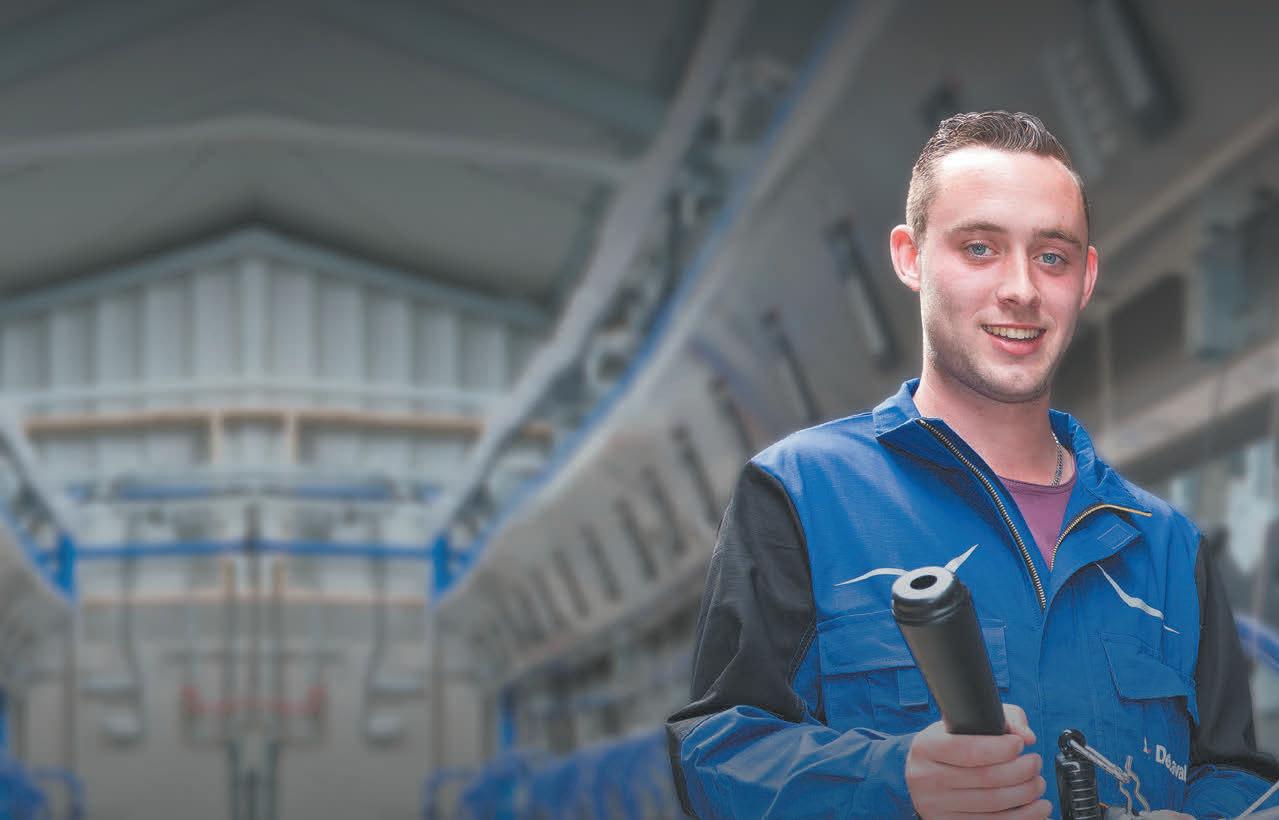
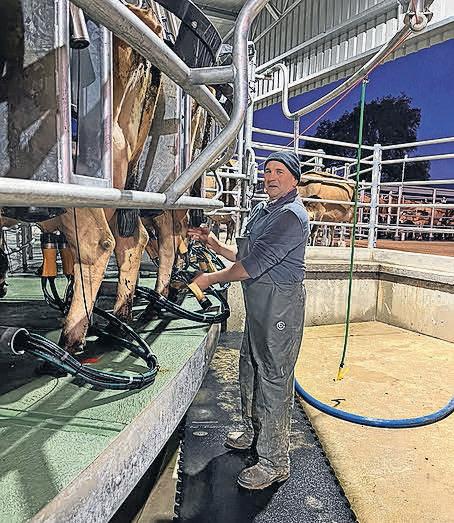
Dairy Australia’s by-products report captures the feed by-products market across various regions in Victoria and southern NSW, providing monthly indicative prices and insights to farmers.




Prices for most feed by-products remain steady or have been under some downward pressure over the recent months.
This is similar to domestic hay and grain markets, as some regions still have green feed available, and many farmers are covered by on-farm fodder stocks for at least the short-term.
Additionally, some demand for supplementary feed is being met by the significant amount of lower quality fodder moving through the market, keeping somewhat of a cap on demand for, and prices of, fibre-based by-products.
This has placed some downward pressure against the generally higher prices seen for the energy-based by-products that are benchmarked off the value of wheat, barley, and soy protein — all of which have jumped since Russia’s invasion of Ukraine.
August byproduct prices compared to last month and the year prior Indicative prices in $/tonne ex site
Source: Dairy Australia
Over the past few months, feed by-product availability has remained generally strong due to increased output from both harvests and the return of food processing closer to normal levels.
Additionally, after reports of increasingly tight supply of almond hulls and tightly held contracts for canola meal, the availability of both may be improved, with a big parcel of almond hulls hitting the market in the past couple of weeks and an excellent canola crop expected this season.
Despite this, canola meal contract interest does remain high, with August being a peak month for booking new season’s product.
There are indications that new season canola meal prices are currently around $520/tonne ex-plant.
Additionally, while road freight accounts for around 75 per cent of the cost of almond hulls moving east from northern Victoria and the Riverina, freight issues have improved somewhat, and prices have eased slightly from July.
Looking ahead though, with heavy canola
plantings and favourable growing conditions so far this season, there are expectations that there will be adequate seed available for further processing. This will likely help with canola meal availability later this year.
Additionally, there are now reports of palm kernel meal being available out of Melbourne for the first time in years.
Recently, demand for supplementary feed and by-products has picked up in line with wet conditions taking hold across Victoria and other southern dairying regions in July and dry conditions persisting across northern NSW. As such, farmers are looking to replenish supplies, and this could start to push prices up for some feed by-products in the coming months.
Subscribe for monthly feed by-products updates and access the full report via the Dairy Australia website: https://www. dairyaustralia.com.au/industry-statistics/ industry-reports/byproducts-report
Isabel Dando is a Dairy Australia industry analyst.



The Australian Fodder Industry Association has launched a fodder research, development and extension stocktake.




“AFIA believes that the stocktake, leading to the development of a strategic and collaborative RD&E approach, will deliver significant benefits to the Australian agriculture sector,” AFIA CEO Paula Fitzgerald told the National Fodder Conference last month.

It is estimated that 38,000 properties are involved in the commercial production of fodder each year, however only about five per cent of farmers consider themselves to be fodder producers, where
fodder is the largest or a major financial part of their farming system.
Most farmers producing fodder consider themselves as ‘belonging’ to other commodity sectors where they derive most of their income — for example, livestock, grain, dairy or horticulture production.
“Because fodder production straddles many agricultural commodities, there is a need for greater strategic ‘fodder collaboration’ across the whole agriculture sector, rather than the current scenario where fodder is considered separately within individual commodity sectors,” Ms Fitzgerald said.
“Also, like the cousin you only see at Christmas, fodder seems to be a top-ofmind topic in times of crisis such as drought and flood, however, during other times it does not seem to be getting the consistent attention it needs and deserves.
“Fodder provides a vital element to many agriculture enterprises, yet there does not appear to be a national approach to fodder as a key ‘resilience tool’, whereby we focus on the production of a quality product, maximise nutrition for livestock, and ensure best practice hay stacking and storage for fire prevention and minimising pest attack.”
AUSTRALIAN DAIRY Farmers has questioned Federal Water Minister Tanya Plibersek’s move to include water buybacks in a new deal to execute the Murray-Darling Basin Plan.
The minister announced on August 22 that a deal had been struck between four states — NSW, South Australia, Queensland and ACT — and the Commonwealth to extend the deadlines for the completion of the basin plan.
The timeline to recover 450 gigalitres of water earmarked for the environment has been pushed out until the end of 2027 and water infrastructure projects until the end of 2026, after the initial June 2024 target was on track to be missed.
The new plan includes more options and funding to deliver the remaining water, such as through voluntary buybacks.
Victoria, which has previously opposed
water buybacks, is the only basin government that hasn’t signed up to the new plan.
ADF president Rick Gladigau said there were a number of unanswered questions creating fear and uncertainty for basin communities, eroding a decade of bi-partisanship support and increasing risks for food security and food prices.
The ADF asks:
Why are buybacks being prioritised when they hurt communities, workers, jobs and food production?
Why is the Federal Government not negotiating in good faith with the states and industry?
Why is Victoria not included in the new agreement when it is a major party to the plan?
Why did the Federal Government call for project submissions to deliver more water only to then ignore them?
Dairy Australia will hold its annual general meeting on November 28 as part of a farmer forum, and will also be accessible online.
The interactive forum and AGM will be held in the Murray River town of Moama, providing the opportunity for farmers to engage over lunch and dinner, hear from other farmers and industry leaders on feedbase and climate, and find out more about the value Dairy Australia delivers to farmers.
There are four vacancies on the Dairy Australia Board.
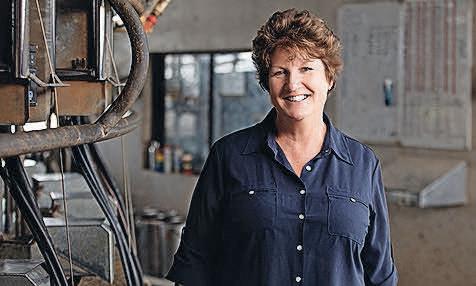
Two of the four vacant positions are for directors with milk producer skills, one is for a director with agribusiness, innovation and adoption skills, and another for a director with dairy supply chain and product promotion skills.
The terms of three directors — Roseanne Healy, Tania Luckin and Paul Roderick
— expire at the AGM. Mr Roderick will stand for re-election, while Ms Luckin and Ms Healy will retire from the board.
The term of Paul van Heerwaarden, who was appointed to fill a casual vacancy in December 2022 also expires at the AGM. He is standing for re-election.
Dairy Australia’s Board Selection Committee chair Tania Luckin said “after a comprehensive search and interview process, four candidates are recommended” by the committee.
They are Paul Bennett (agribusiness, innovation and adoption skills), Paul van Heerwaarden (dairy supply chain and product promotion skills), Karen Moroney (milk producer skills) and Paul Roderick (milk producer skills).
Mr Bennett is from Tasmania and is chair of family owned and award-winning Ashgrove Cheese. He was previously the chair of DairyTas, is a dairy and beef farmer

Why is the Federal Government not embracing innovation and science to provide more positive environmental outcomes and preserve jobs and economies driven by productive agriculture?
The ADF says it supports the intent of the plan to improve environmental outcomes while maintaining food production; the extension of time to deliver the basin plan announced in the new agreement and the use of the socio-economic test in assessing the impacts of water buybacks.
However, the ADF says it is against any watering down of, or removal, of the socio-economic test for water buybacks and deals that ignore the impacts on communities, workers, business and food production.
“Since the millennium drought, 2100 Gl of water has been transferred from farming to the environment,” Mr Gladigau said.
“Dairy farmers have done the heavy lifting. This has improved the environmental health of the basin.
“Dairy farmers are among Australia’s first environmentalists. Landcare is proof of their commitment.
“They have made significant investments to improve water use efficiency and to build drought resilience into their farming systems.
“At a time when food prices are rising and the government itself is holding an inquiry into food security it is ironic that buybacks are being prioritised.
“Buybacks create insecurity and make food production unsustainable.”
Farmer groups — including the National Farmers’ Federation and the Victorian Farmers Federation — have slammed the new basin plan deal.
and is involved in many community and youth organisations.
Mr van Heerwaarden’s family farming background led him to a career path in agribusiness including six years as chief executive officer of Bega Cheese. He has served on a number of company and joint venture boards including for several years as a member director of Dairy Innovation Australia.
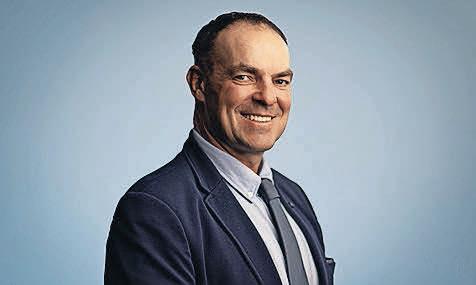

Ms Moroney is a farmer from Eskdale in north-east Victoria and is a former chair of Murray Dairy. She is also a director of rural financial counselling service AgBiz Assist, and president of the Mitta Valley Landcare Group.
Appointed to the board in November 2020, Mr Roderick has operated his family dairy farm at Harrisville in south-east Queensland for the past 30 years. He was previously chair of Subtropical Dairy and had a role in setting up the Young Dairy
Network in Queensland.
Dairy Australia members will vote for directors at the AGM or in advance by proxy. To be successfully elected to the vacant director roles, each nominee will require a majority of the votes cast.
All levy payers are eligible to become members of Dairy Australia and vote at general meetings.
A hotline (1800 004 377) and email address (membership@dairyaustralia.com. au) have been set up for levy payers to become a member or check their details are correct.
For more information on the director election process, go to: https://www. dairyaustralia.com.au/directorelections#.ZGGx8E9ByHs
Information about participating in the forum and AGM as well as instructions for voting, will be provided closer to the date.
Establishing gut health and development in calves is essential for building a foundation of performance and profitability in the future herd. ACTIGEN focuses on supporting animal performance by promoting good bacteria, building defences and maximising growth and efficiency.

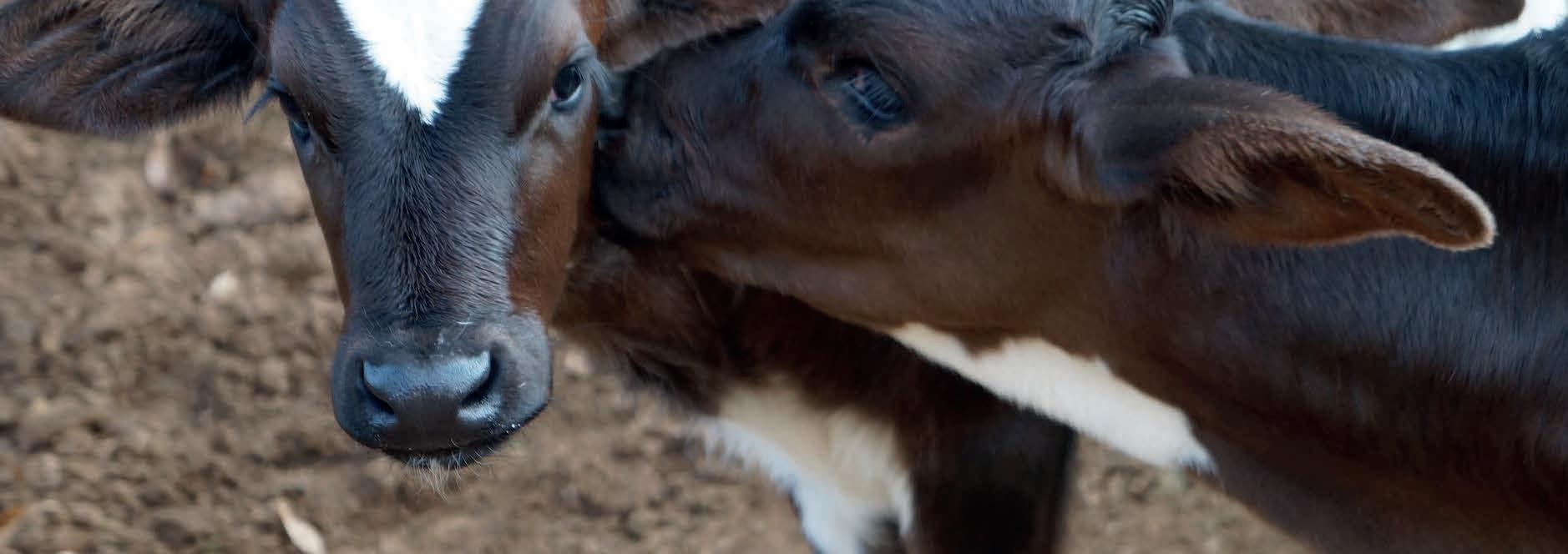
Ten Australian farmers have been named as the inaugural Jersey Elite Master Breeders at a special ceremony in Melbourne.

The Master Breeder awards recognise breeding excellence over the past 20 years and the commitment of farmers to the breed.
Four of the inductees are from Gippsland in eastern Victoria, four from northern Victoria, one from western Victoria and one from NSW.
The inaugural Master Breeders announced in Melbourne on August 19 are:
ɋ Wilson family’s Shirlinn Jerseys, Tamworth, NSW.
ɋ Geoff and Natalie Akers’ Loxleigh
Jerseys, Tallygaroopna, northern Victoria.
ɋ Kuhne family’s Bushlea Jerseys, Koonwarra, Gippsland.
ɋ Bacon family’s Brookbora Jerseys, Tennyson, northern Victoria.
ɋ Alan and Janine Carson’s Cairnbrae

Jerseys, Colac, Western Victoria.
ɋ Lynton and Lisa Broad’s Broadlin Jerseys, Wonthaggi, Gippsland.
ɋ Rob and Kerrie Anderson’s Kings Ville Jerseys, Drouin West, Victoria.
ɋ Nicholson family’s Jugiong Jerseys, Girgarre, northern Victoria.
ɋ Luke and Mel Wallace’s Wallacedale Jerseys, Warragul, Victoria.
ɋ Sprunt family’s Kaarmona Jerseys,
Kaarimba, northern Victoria.
Jersey Australia general manager Glen Barrett said the Master Breeder award was driven by data across the past 30 years on the cow’s individual and progeny performance and would be updated each year.

It requires breeders to have been a member of Jersey Australia for at least 20 years and to register 25 animals a year on average across those 20 years along with producing elite brood, type and production cows and elite bulls.
The new award is part of Jersey Australia’s Jersey Elite awards that also recognise elite cows and bulls.
Mr Barrett said the title was something

all breeders should aspire to.
“It is an award they can use to promote themselves and their stud as being at the elite level of Jersey breeding in Australia,” he said.
During the awards night on August 19, presentations were also made to the breeders of Jersey Elite bulls and Jersey Elite brood cows.
It is expected that Master Breeder awards will be presented annually during the Jersey Australia AGM and Conference, subject to a breeder qualifying for the achievement.
Mr Barrett said the awards reflected the importance of quality
breeding as Australian Jerseys continue to make a significant impact on the world stage.
Jersey Australia president Lisa Broad, who is one of the inaugural recipients alongside husband Lynton, said the title was “something everyone should strive for”.
“It means you’re being recognised for your continuous hard work over a long period of time,” she said.
“Dairy can be a tough industry and we don’t always get recognised for our contributions. This is a good way to recognise people’s hard work and excellence in the breeding side of it.”
THE FEDERAL Court has ordered Lactalis Australia Pty Ltd to pay $950,000 in penalties for contravening the Dairy Code of Conduct by failing to meet some of its obligations in relation to the 2020-21 milk season.

Following proceedings brought by the ACCC, the court found in September 2022 that Lactalis had breached the Dairy Code by publishing and entering into agreements that allowed Lactalis to unilaterally terminate an agreement in circumstances that didn’t involve a material breach by farmers.
In particular, under the agreement, Lactalis was permitted to unilaterally terminate the agreement when, in Lactalis’ opinion, the farmer had engaged in “public denigration” of processors, key customers or other stakeholders.

On July 25 the court found clauses like these

strike at the Dairy Code’s essential objective, and, although there was no evidence of any actual harm suffered, it was possible it had “a chilling effect on the farmers who were subject to it”.
“We took action because we considered Lactalis’ conduct would reduce transparency in the industry and served to perpetuate systemic bargaining power imbalances between processors and farmers,” ACCC deputy chair Mick Keogh said.
The court also found that Lactalis had breached the Dairy Code by failing to publish its milk supply agreements on its website, and instead required farmers to sign up to receive their milk supply agreements by email.
“The code was introduced to help dairy farmers make informed choices about where they sell their milk by ensuring there is
transparency in pricing agreements and by allowing them to compare agreements from different processors in a timely fashion,” Mr Keogh said.
“These were the first contested proceedings under the Dairy Code and the outcome is an ongoing reminder that processors who fail to comply with the Code may face significant penalties.
“Ensuring that small businesses receive the protections they are entitled to under industry codes continues to be one of the ACCC’s enduring compliance and enforcement priorities.”
eastAUSmilk CEO Eric Danzi said it was positive to see the ACCC was enforcing the code where there were breaches, including taking court action against processors.
“This is a reminder to all processors to
ensure they act responsibly and adhere to the code or the ACCC could take action against them,” Mr Danzi said.
“A review of the Dairy Code is due to occur by the Federal Government in the next year and it is time to tighten the code to ensure that the code is effective and that any loopholes are closed.
“Issues such as minimum pricing in longterm contracts and the effectiveness of the grocery code are issues that need to be reviewed.”
The ACCC said Lactalis was one of Australia’s largest dairy processors and purchases milk from more than 400 dairy farmers across all Australian states.
The company produces a wide range of dairy products across a number of brands including Pauls, Oak, Vaalia and Ice Break.
™

Next generation calf supplement based on innovative research and development; contains:
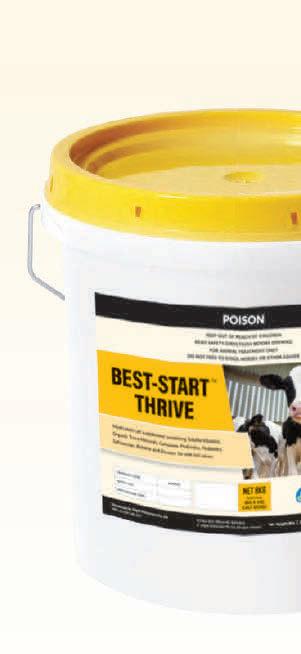
Bovatec® - research proven to control clinical signs of coccidiosis

Celmanax™ - research proven to reduce the incidence, severity and duration of scours (including cryptosporidiosis)
Safmannan® – research proven to improve immune response and bind a broad spectrum of major pathogens (E. coli and Salmonella)
Betaine – osmoregulator to aid hydration and gut wall integrity
Soluble Vitamins and Organic Trace Minerals supplied in quantities to meet or exceed the calf’s daily requirements



Prebiotics & Probiotics to aid digestion and gut microbial balance (15 billion CFU per 10 gram dose)
For more information, or to locate your local stockist, call Jon Reynolds. 4Sight Global | www.4sight.bio | jon@4sight.bio | 0423 008 495
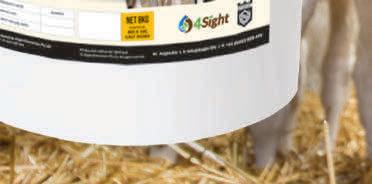 The inaugural Jersey Elite Master Breeders announced in Melbourne on August 19.
The inaugural Jersey Elite Master Breeders announced in Melbourne on August 19.
We changed to BEST-START THRIVE this season - it’s been an absolute game-changer for calf health and condition!
DAIRY FARMING can be a serious business, but sometimes you need to take a break just for laughs.
A record 360 south-west Victorian dairy farming women had that opportunity in Warrnambool on August 17 when they at tended the 2023 South West Dairy Ladies Luncheon.

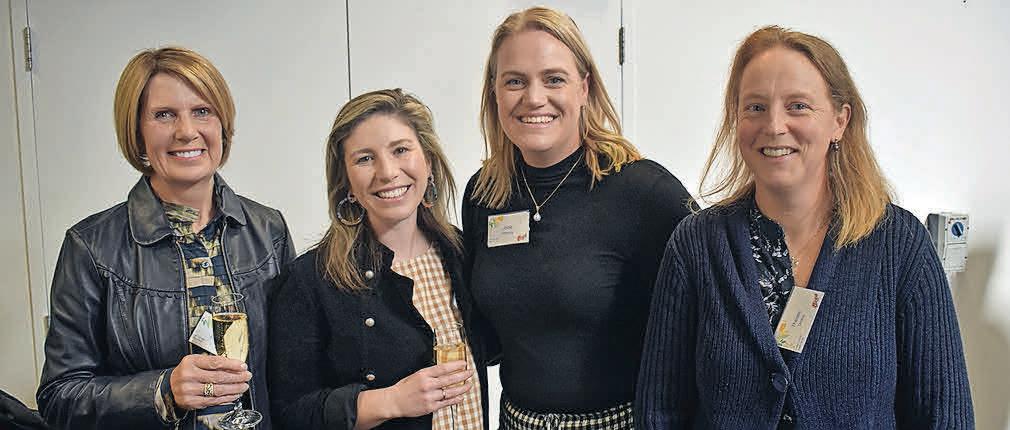


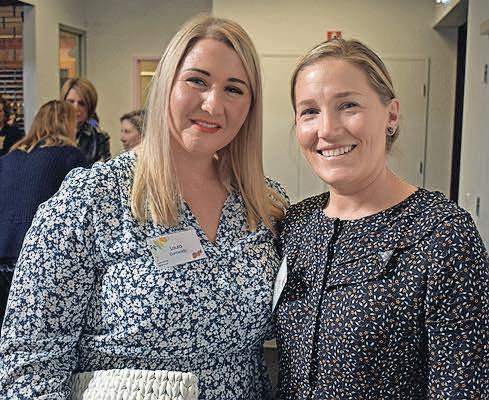


The lunched adopted the theme ‘Just for Laughs’ and featured broadcaster, TV presenter, journalist and writer Myf Warhurst as guest speaker.
The event is organised by an independent committee, supported by WestVic Dairy and Dairy Australia.
Committee member Belinda Doolan said the luncheon was the biggest local event specifically for women and continued to grow.
“The aim is to get the ladies together off the farm and dress up for a good day out,” Mrs Doolan said.
“It’s just a chance to network and socialise and have a few laughs. You see your neighbours here that you haven’t seen for weeks on the farm because we’re all working so hard.
“The women deserve a day out and they really enjoy it.”
Mrs Doolan said the theme ‘Just for Laughs’ was chosen to keep the day light and fun.
“In previous years we’ve had more informative and serious talks but today we just wanted to get everyone to have a laugh and enjoy themselves.”
The luncheon has grown over the years.
“The goal was always 320 people but demand was so high this year that we increased capacity to 360,” Mrs Doolan said.
“We sold out earlier than usual and we had a waiting list but we want to stay here; we really like the venue and being in Warrnambool.”
Mrs Doolan said the women attending enjoyed the event and left with a smile on their faces and a positive outlook for the future.
“The women are always very thankful and love catching up with each other,” she said.
“They share our goals and say it’s lovely to see so many fellow women in dairy all in one room to catch up.”
Mrs Doolan said there was a positive vibe in the crowd.
“We’ve been through our tough times but things are positive at the moment.
“The event was cancelled during COVID and we’ve had the GFC and factory clawbacks and droughts and fires but it’s nice to know we’re all here for each other and can enjoy catching up and enjoying great food and entertainment.”
Letters to the editor on topical issues are also welcome.
Letters should be concise and carry the name and town address of the author, as well as a contact phone number, not for publication.









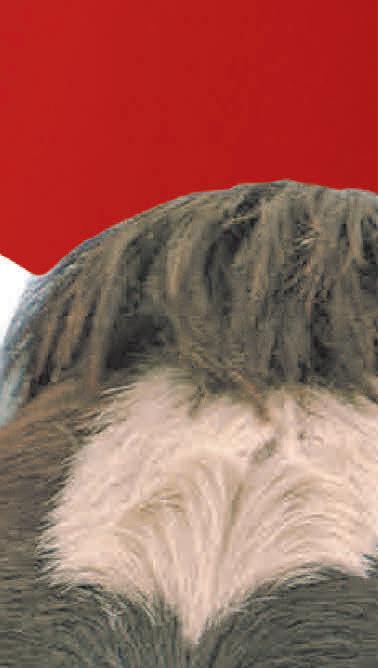


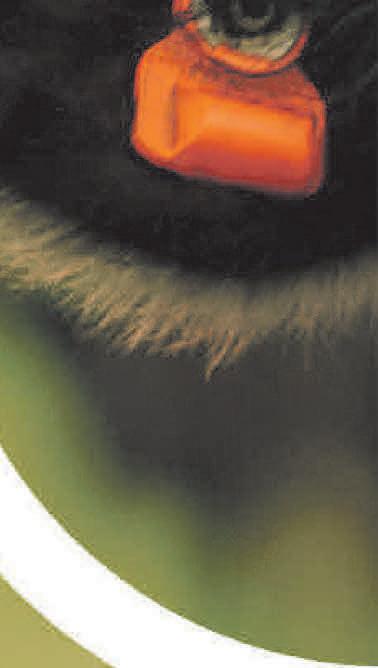
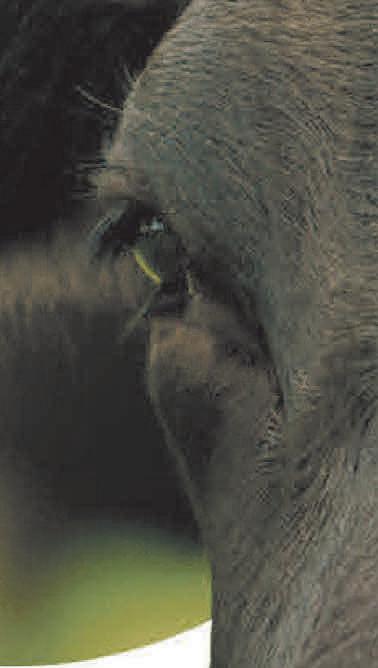
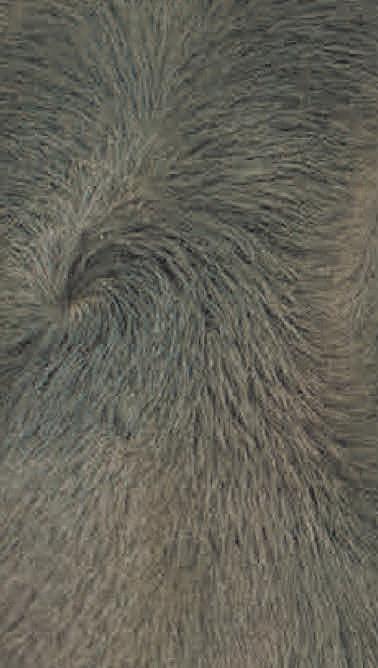




A CRESSY-BASED dairy farm has been crowned cream of the crop in one of tightest competitions in the history of the Tasmanian Dairy Awards.
It was third time’s a charm for Woodrising Dairies, who were announced as the 2023 ANZ Dairy Business of the Year at Tasmanian Dairy Awards. The win follows their previous two years as finalists.
Woodrising Dairies is owned by Compass Tas Dairy Operations and managed by Troy Ainslie.
The business was the top performer from a group of 27 Tasmanian dairy farm businesses that participated in a benchmarking program for the 2021-22 financial year.

The Dairy Business of the Year Award is conducted by the Tasmanian Institute of Agriculture (TIA) as part of the DairyHIGH 2 project, which is funded by Dairy Australia and TIA.
The free benchmarking program considers a range of efficiency and performance indicators of dairy farming businesses factors including financial, management, pasture, herd size and environment.

TIA dairy extension team leader Lesley Irvine said the calibre of the three finalists was outstanding and that the judges were impressed by Woodrising’s exceptional approach to people and pasture management.
“Woodrising Dairies had a strong focus on their farm team and showed excellent mentoring and professional development,” Ms Irvine said.
“There was a real focus on people and a push to create a good work-life balance, which was great to see.
“The high level of care for the cows and young stock was also particularly impressive.
“Pasture management on their farm was excellent — achieved through regular pasture measurement, annual soil testing and development of a fertiliser plan.
“They also used soil moisture meters to accurately schedule irrigation and had a good understanding of the soil structure to optimise water use.
“Congratulations to Woodrising Dairies for winning the award in their third year as a finalist as well as to the teams at The Avenue and Ashburton for their consistent high performance.”
The two other finalists in the 2023 ANZ Dairy Business of the Year Award were Ashburton in Dairy Plains, owned by Aurora Dairies and managed by Francesco Fornari; and The Avenue in Parkham, owned by Aurora Dairies and managed by Pradeep Badavath.
The Tasmanian Dairy Awards are a collaboration between TIA and DairyTas.
DairyTas executive officer Laura Richardson said it was wonderful to bring Tasmania’s dairy industry together to celebrate high performers in the industry and join together to reflect and celebrate the past year.
“It has been fantastic to recognise those businesses and individuals throughout the industry that have performed across these key areas in 2023,” she said.
“With the Tasmanian dairy industry being worth over $500 million at the farm gate, and Tasmania now producing over 10 per cent of Australia’s milk production, Tasmania’s dairy industry continues to grow momentum.

“The awards celebrate the industry and the farming businesses who drive the sector.”
Results of the 2023 Tasmanian Dairy Awards
ANZ Dairy Business of the Year Award: Woodrising Dairies, owned by Compass Tas Dairy Operations and managed by Troy Ainslie.
Fonterra Share Dairy Farmer of the Year Award: Nathan and Cassidy Lawrence, Currajong at Flowerdale.
Fonterra Dairy Employee of the Year
Award: Alexandria Shanks.
Aurora Energy Employer of Choice
Award: Ashgrove Farms Tasmania Pty Ltd.
Mondelez Young Dairy Farmer
Encouragement Award: Russell Grandfield.
NRM North Dairy Environmental Award: Meander Pastoral Co Pty Ltd.
Safe Farming Tasmania Dairy Farm Safety
Award: Compass Tas Dairy Operations Pty Ltd.
The inaugural Future of Dairy Scholarship (funded by the Lawrence family): Gabriella Jago.
What do you do when Australia’s ‘premier dairy event’ clashes with a pop megastar’s long-awaited Australian tour?
You move the dairy conference, of course.
The Australian Dairy Conference was scheduled to be held in Melbourne from February 14 to 16. The dates were already being promoted and registrations were already open.
But then ‘Tay Tay’ mucked it all up.
In case you’ve been living under a rock — or have no connection to anyone under 30 — pop sensation Taylor Swift broke the internet when tickets to her Australian concerts went on sale.
She has sold out three concerts at the MCG, on February 16, 17 and 18 next year.
That’s a lot of people in Melbourne.
So, the ADC organisers jumped in and changed their dates to February 12 to 14.
And judging by the media release they issued about the change, they have a sense of humour.
“There is only one place to be in February 2024 and that is Melbourne for the hottest and biggest events in town,” the ADC statement said.

“Turns out international megastar Taylor Swift also wants to join in the fun.

“So, we have pulled a bit of a ‘swifty’ ourselves and shuffled Australia’s premier
dairy event forward to the start of the week (Monday to Wednesday) to ensure you can absolutely immerse yourself in both events.
“This slight shuffle means you can totally devote all your attention to your dairy business and fit in Tay Tay at the end of the week.
“Or depending which way you are aligned alternatively escape the city in time to avoid the forthcoming teenage invasion (wink!).
“Our advice, lock your flights and accommodation in ‘swiftly’ before things really reach fever pitch as Taylor mania appears to be cranking up already and is seriously next level.
“Get on the front foot to avoid escalating prices. Book your accommodation now.”
 Australian Dairy Conference organisers have changed the event’s dates to avoid a clash with Taylor Swift’s Melbourne concerts next year.
Photo: AP/AAP Image.
The team at Woodrising Dairies (from left) Ryan Ashby, Tom Ennis, Charlie Brown, manager Troy Ainslie (manager) and Toni Ainslie.
Australian Dairy Conference organisers have changed the event’s dates to avoid a clash with Taylor Swift’s Melbourne concerts next year.
Photo: AP/AAP Image.
The team at Woodrising Dairies (from left) Ryan Ashby, Tom Ennis, Charlie Brown, manager Troy Ainslie (manager) and Toni Ainslie.

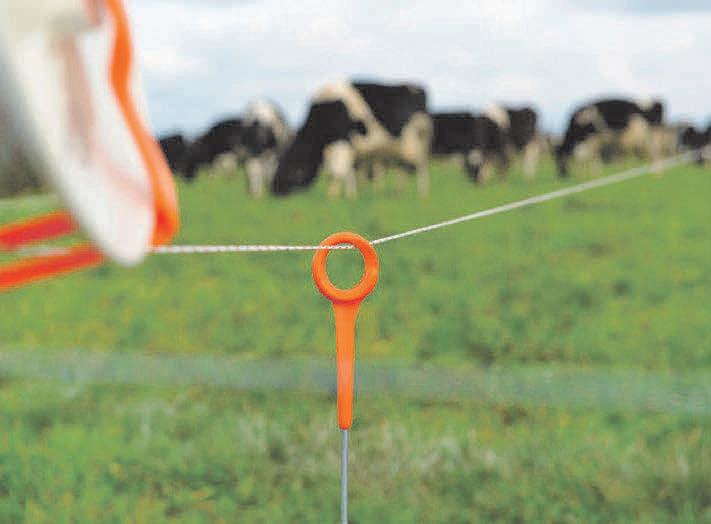

A TRIPLE treat has been born at Bruthen, in Victoria, at the dairy farm of Peter Jennings and Sue Croton.
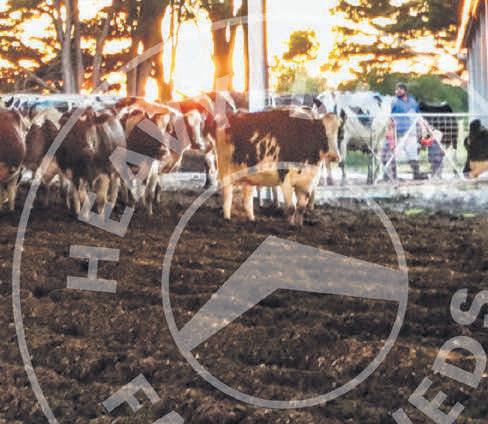

An autumn-calving British Friesian cow in her fifth calving year gave birth to triplets — a bull calf and two heifer calves — on June 6.
Researchers estimate only 0.01 per cent of calvings in dairy cows results in triplets.
It’s the first lot of surviving triplets born on
the farm, according to family member Adam Hasler.
“Peter said to me after milking, ‘I think she’ll calve tonight, just check her later’,” Adam said.
When he did, the cow was cleaning the calf. Then Adam realised there was a second calf on the ground, and then his torch beam lit up a third.
They were all alive and alert.
“It looked like she’d dropped each one as she was cleaning up the previous calf,” he said.
The heifers have been named Tic and Tac, and the steer is Hoof.
Cows on this Bruthen farm are joined with natural mating, and this cow was caught by the bull towards the end of the joining period.
“We were close to the end of calving,” Adam said.
“The first night they were born, Peter and I fed the bull and a heifer, just to help the cow a bit. The second night we fed one of the heifers.
“Since then, we’re confident the cow has been feeding all three calves.”
Heifers born out of twins on the Bruthen farm in the past have been viable milkers, so the female calves have a future in the herd.
“The heifers — Tic and Tac — will go into the milking herd,” Adam said.
“Hoof will grow up a bit before we decide what to do with him.”
The three calves have inherited the same forehead to nose blaze as their mother.
There is little enough research to quantify the odds of a cow birthing triplets, but Holsteins have a higher rate of multiple births than other breeds, at about four per cent.
One of the most famous Friesian-Holstein cows in the dairy industry, in 1904, calved triplets. She was Eldred Clothilde’s Josephine 2nd, belonging to the De Kol strain, from which most Holsteins in the United States are derived.
The cow was 10 years old when she calveddown the triplets. The sire was Sir Johanna Aaggie Fayne 10th.
In 2018, researchers estimated the occurrence of twin calving in Holstein Friesian cattle
is three to five per cent (2018, Twin calving and its connection to other economically important traits in dairy cattle, Andras Gaspardy, James Sheridan, Melinda Ari and Laszlo Gulyas).


They reported that, in general, twin pregnancies occur in about 10 per cent of dairy cattle, but only 0.01 per cent were triplet pregnancies; and that cows with higher lactation performance and better fertility tend to be more disposed to multiple pregnancies.
The incidences of multiple ovulations were more frequently observed in Holstein Friesian cows.
More twin and multiple births occur in summer, spring and autumn than in winter.
The quality of feed and cows with high milk yield are two environmental indicators that contribute to a three-fold higher frequency of multiple ovulation in dairy cows.

High milk production near the time of ovulation can also increase the incidence of double ovulation.
Peter Jennings confirmed the dam of the triplets had only single births prior to calving the triplets.
Some research has been undertaken through the USDA Meat Animal Research Centre in Nebraska, indicating multiple births is a heritable trait from both the bull and cow, with the likelihood of heritability being less than six per cent.
The rate of multiple births increased with the age of the cow, and it was more likely to occur in autumn-calving cows.
Adam Hasler found the cow with her three freshly born and live calves when he went to check on her during the night.Multiple births in cattle are fraternal, meaning the cow ovulated multiple eggs that became fertilised.


When a cow does give birth to multiple calves, it is rare for them all to survive; and if all survive, the cow doesn’t always accept and take care of all three as her own.
A couple of years ago, in Ireland, two cows on two separate farms birthed triplets. One was a Fleckvieh cow and the other a Holstein cow, and both were joined using Fleckvieh semen.

The triplets were raised by people.
What is unique about the Jennings farm, is the triplet calves are still being fed exclusively by their dam.
“We’ve had a few sets of twins survive over the years, and we always leave them with their mother, too,” Adam said.
In July, the calves started sharing a bit of hay and grain from their mother’s portion.
Family members and workers on the farm compete with each other to take the best photos of the triplets.
“We all find plenty of reasons to drop by the paddock to check on them,” Adam said.
This year on a West Kerry (Ireland) farm, a nine-year-old Holstein Friesian cow gave birth to triplet calves — two bulls and a heifer — and looked after them herself.

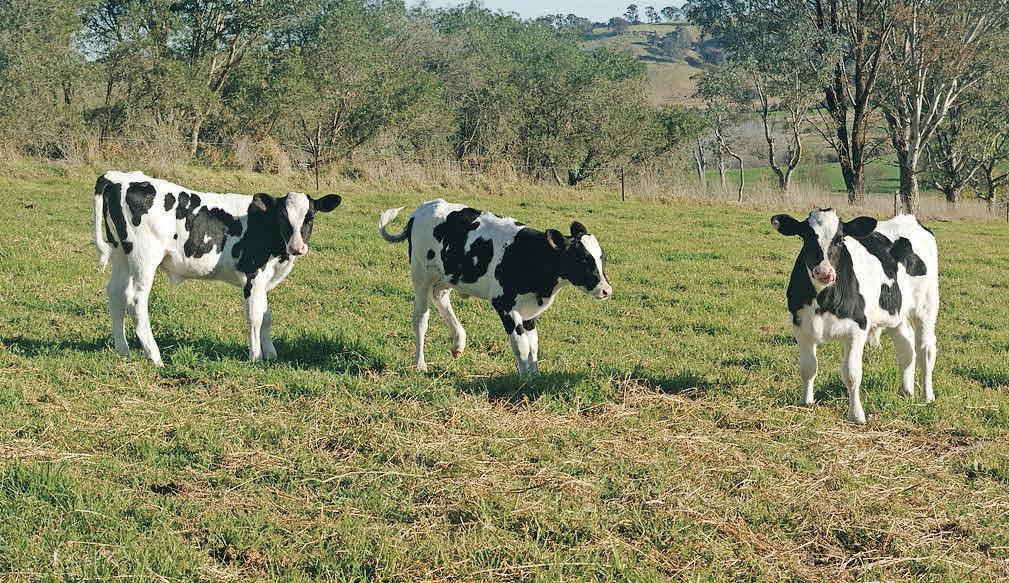
This cow has previously birthed three single calves, four sets of twins and now a set of triplets.

The 2023-drop calves are the result of semen from artificial insemination, taken from a Holstein Friesian bull.



In 2017, in South Glamorgan in the UK, a Holstein Friesian cow gave birth to two bulls and a heifer calf on her third calving. But she required assistance to calve.

22%* Crude Protein
* TypicalDMAnalysis
The British Friesian cow and her triplet calves a couple of days after being born on June 6. Photo: Adam Hasler There’s plenty of energy in the triplet calves and cow. Multiple births in cattle are fraternal, meaning the cow ovulated multiple eggs that became fertilised.The first 3 months are so important to your calves’ future in the herd, so don’t compromise, use Veanavite No1 Calf Pellets.
 BY SOPHIE BALDWIN
BY SOPHIE BALDWIN
WHEN STEPHEN and Brooke Brown made the decision to build a new dairy on their Gunbower farm, they had no idea the build would take nearly two-and-a-half years and cost them so many sleepless nights.
COVID-19 lockdowns, floods, waiting for trades and supply chain issues all contributed to a lengthy build, along with accessing building and planning permits.
But in early July this year, they turned on the new 50-unit rotary for the first time and began the much awaited next chapter in their dairy journey.
“It is a massive job co-ordinating a dairy build,” Stephen said.










“No-one can do it for you and you have to make all the decisions, co-ordinate and organise everything for yourself. I am glad I have had a construction background because it is not easy.”
A new dairy was always on the cards for the northern Victorian couple after spending the past 17 years milking in a nine-a-side dairy — the old dairy had well and truly served its purpose.
“We bought our farm in 2006 and it was always part of our whole farm plan to move the dairy to the centre of the farm,” Stephen said.
“We had to co-contribute to upgrade the power for irrigation under NVIRP (Northern

Victoria Irrigation Renewal Project) and that was the beginning really so it has been a long time in the making.”


The couple have laid out the farm, upgraded the irrigation system to pipe-and-riser, fenced and installed a bore.
“The dairy is our last major infrastructure spend and we have upgraded not to milk more cows, but to make the job easier for us as a family and to stay away from government red tape and just do the job ourselves,” Stephen said.
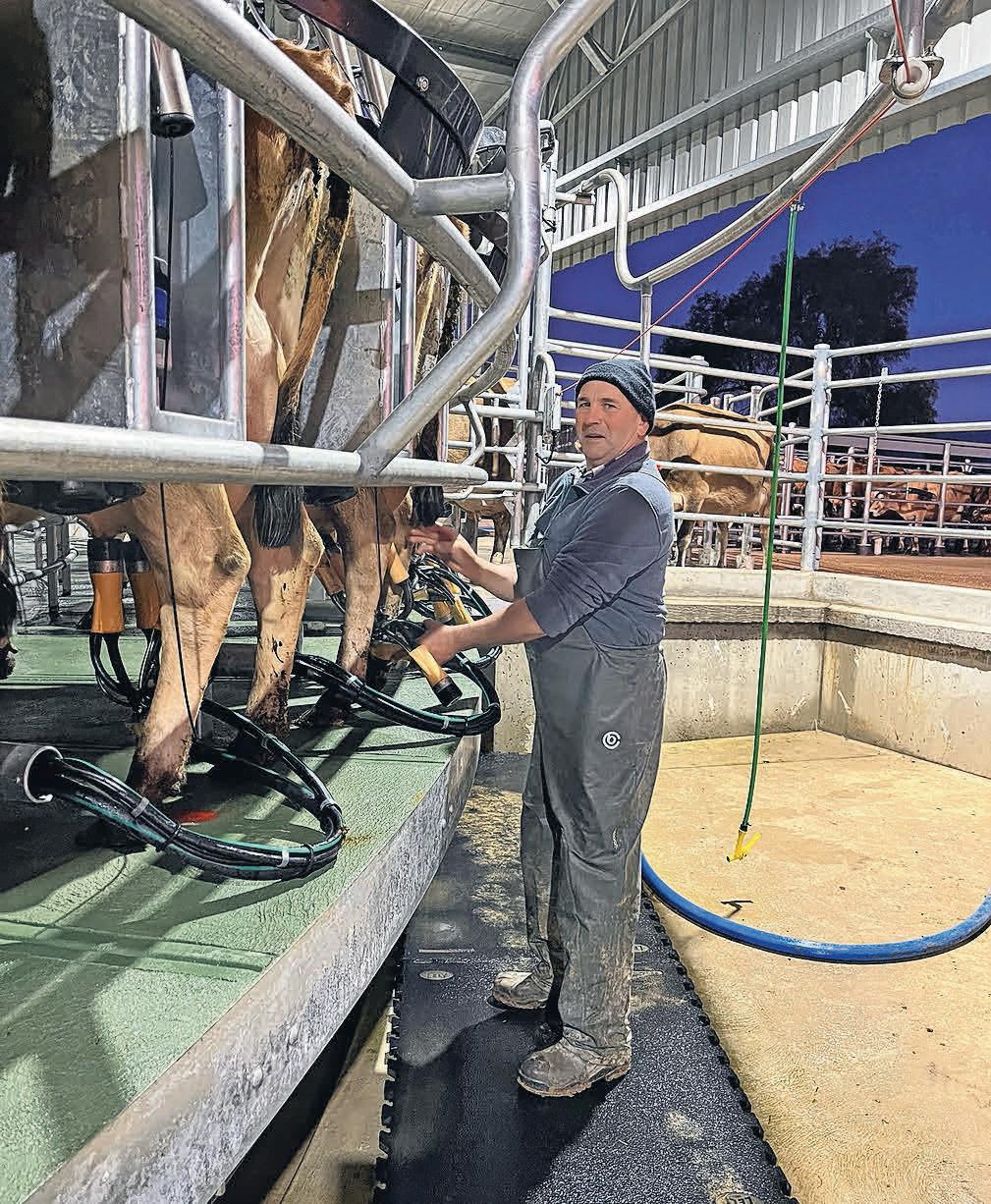
Initially the couple purchased a second-hand dairy from a farm around the road but in the end they decided to build a new platform. They didn’t want to have to turn around in 10 years time and put in a new one in because of wear and tear.
“You can’t replace a new platform very easily and we had access to a whole list of optional extras with a new build. I think we ended up with them all — hardener in the concrete, stainless steel, you name it,” Stephen laughed.



The couple were still able to reinstall the vat, plate cooler, variable drive vacuum pump and the ADF system, which saved a fortune, and they sold all the bits and pieces they didn’t need.
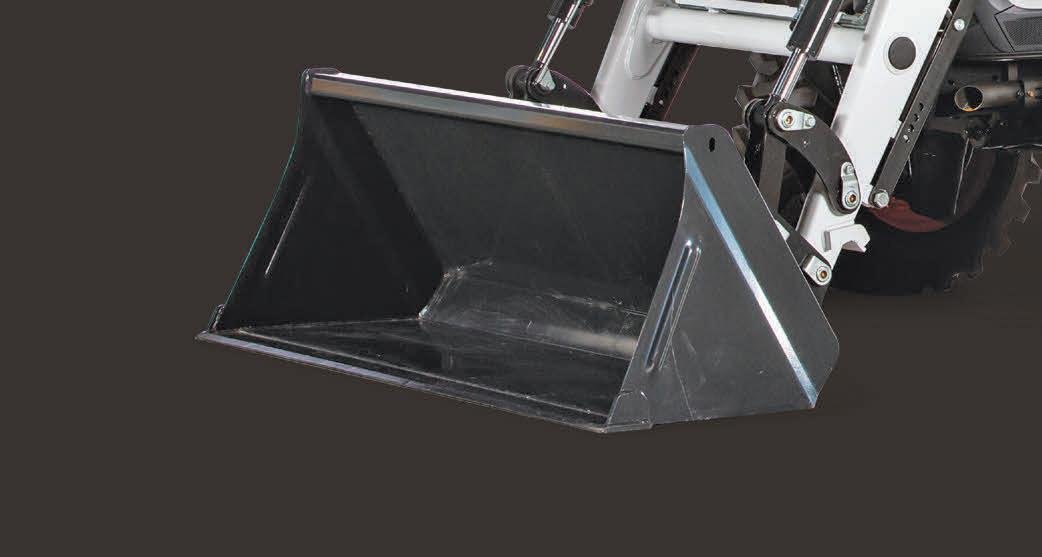
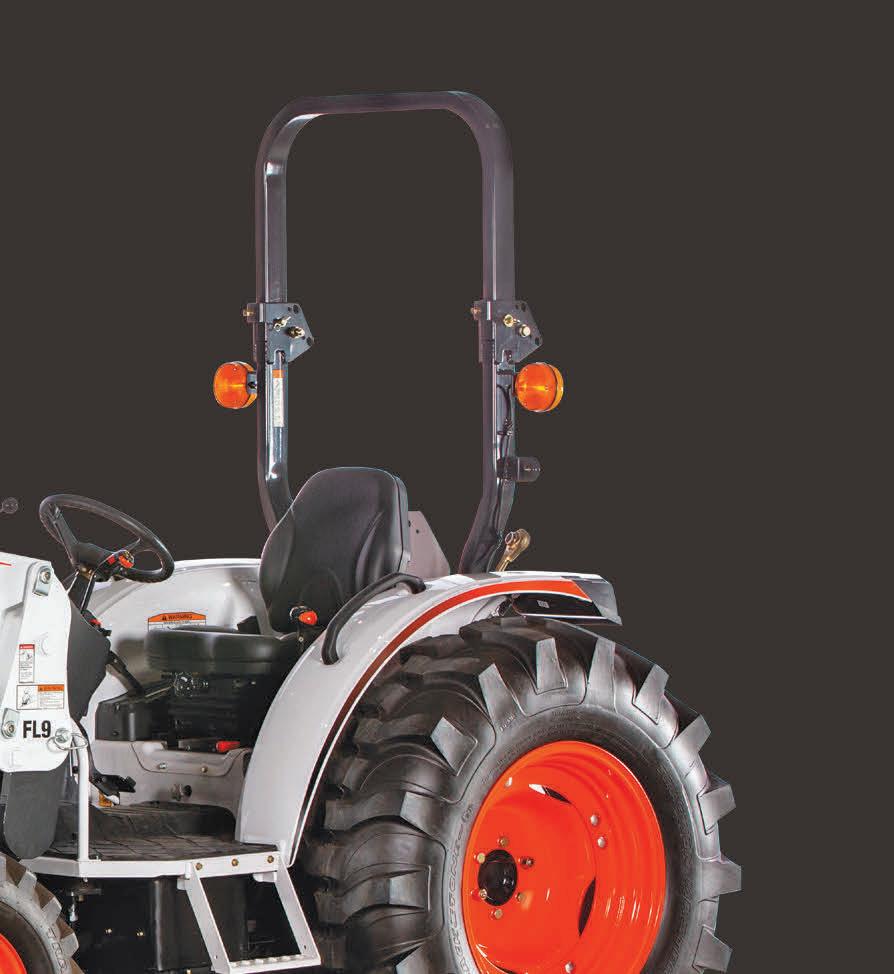
Time delays made the building process stressful and the couple thought it was never going to end. The actual shed structure was completed in March 2022 but it was waiting for trades and everything else that took so long, in particular concreting.

“The concreter said to us if he was quoting for this job today, it would be double the cost, that’s how much things have increased in price over the last couple of years,” Stephen said.
He said costs had escalated so significantly that if the couple were starting a new build today, they probably wouldn’t go ahead.
“This would easily be a $2 million investment if we started in 2023.”
The delay in the build meant the couple had a particularly exhausting 2022-23 season.
“We expected to be milking in the new dairy last spring so we milked more cows than we normally would, which ended up putting a lot of pressure on us time-wise and it was pretty tough going last year,” Brooke said.
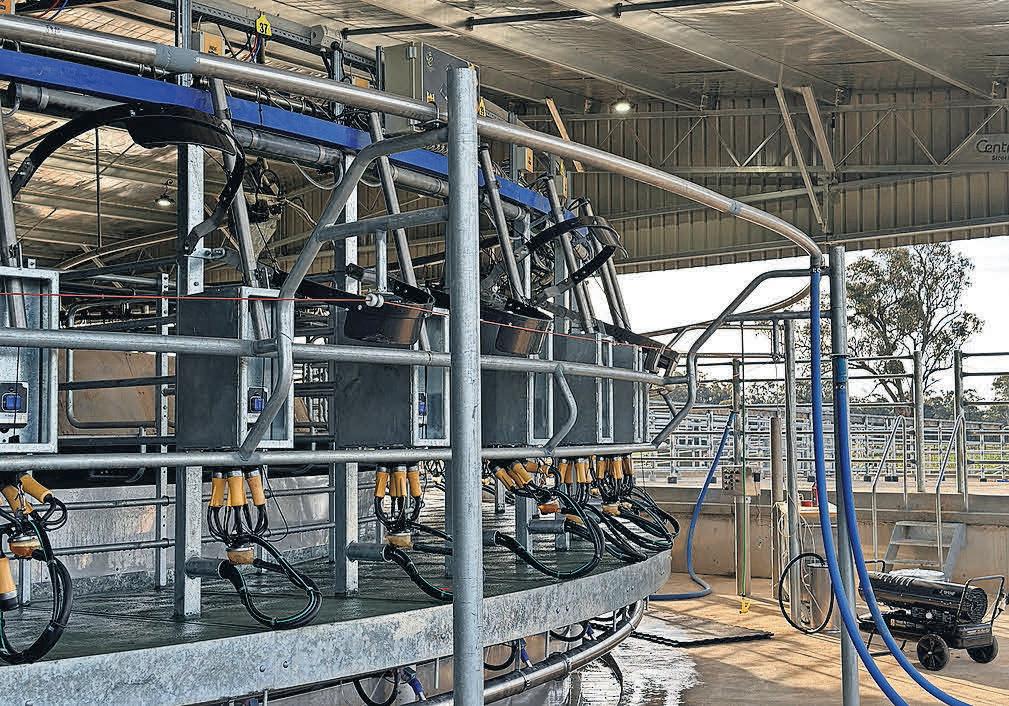
At their peak milking 270 spring-calving cows, they were spending seven hours in the dairy a day. This time will be significantly reduced once they iron out the glitches.
As with all new builds there were a few teething problems with pulsation and the feed system, but the couple were surprised by how well the herd took to the rotary.
“Within the first few milkings the cows were walking on by themselves and ironically the biggest problem we have had is actually getting them to get off and stay off, they are always trying to get back on,” Brooke said.
The new dairy has never been about significantly increasing herd numbers but rather doing things easier.



“We are comfortable with our herd size and








the way we run our farm. We can grow a fair bit of feed ourselves and a spring-calving herd suits our management,” Stephen said.
“The build might have been dearer than we expected and took twice as long but it has certainly been worth it and I can’t wait to watch the herd settle in while we get some much-needed time back to do other things.”
Power Systems Australia are the Australian AKSA distributor for a large range of Diesel, Gas & Hybrid generators for stand-by and prime applications. No matter what style or size of generator you are looking for, Power Systems Australia are your Generator specialists.
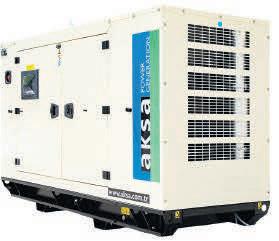






1300 453 054 3 Holcourt Road Laverton North Victoria 3026

www.powersystemsaustralia.com.au








sales@powersystemsaustralia.com.au










 The 300-cow yard.
Part of the new rotary dairy.
The vat was part of the second-hand dairy purchase.
The 300-cow yard.
Part of the new rotary dairy.
The vat was part of the second-hand dairy purchase.
AS A dairy farmer, you regularly rely on staff and advisers to be able to run your business effectively.
Nutritionists, AI specialists and veterinarians sometimes have multiple dairies to visit in one day.

Be it a small or large herd, there’s always a lot of cow data to interpret on-farm, and usually

only a tight timeframe in which to do so. There sometimes simply isn’t enough time to spot and tackle important issues, let alone closely track effects of treatments or changes in herd management.
This is where sharing cow data takes centre stage.
Insights derived from cow data can significantly enhance herd performance and contribute to your financial success.
Sharing this invaluable data with people who need to be in the know is pivotal in making informed choices for your business.
The MultiView function in the CowManager system gives users access to graphs dating all the way back to the date of installation.
This way, advisers can compare yearly, seasonal and monthly cow data per cow and per group. Recognising patterns and opportunities they otherwise maybe wouldn’t have.
Isaac Korpershoek runs a farm at Forest in north-west Tasmania with his wife Angelique, who is a vet.
They can give anyone access to their cow data by simply adding their email address to their CowManager system.

“It’s given us the confidence to go away, to relax,” Isaac said.
“You can have faith in the system, and you can check back on your phone from wherever you are. We can go to Melbourne for the footy and know what is going on with the herd at home.”
By seamlessly incorporating staff and advisers into the system with just one click, they can provide optimal support to dairy ope rations, even when they’re not on location.

Real-time access to specific cow data empowers them to meticulously prep their visits or closely monitoring recovery, offering dairy farmers a sense of security.

David Cook and his wife and son milk a commercial Jersey herd of 330 in south-west Victoria. They rely on cow data every day to make decisions on herd health.
“You don’t panic and call the vet,” David said.
“We can watch and decide by the graph if we can treat her or if we need the vet to come. It gives us 24/7 monitoring.”
Nutritionist Marcus Hollmann works with a dairy farm that uses CowManager’s MultiView data sharing functionality.
“I really like the outstanding graphs,” Marcus said.
“They capture not only the snapshot of the herd today, but also let me view changes over time very quickly, comparing eating and rumination times.
“It’s a tool in our toolbox to respond quickly, fine-tune the cows’ diet and essentially make the dairy more profitable.”
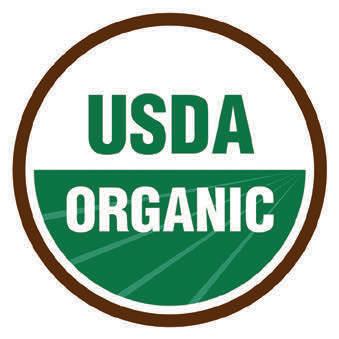
But sharing data isn’t only just about giving advisers that extra ‘in’.
According to Liam Allan — who sharefarms with Paul and Christine Moloney in Terang, Victoria — it helps to keep the entire team up to speed. Knowing the data is there and that everyone is on the same page, helps lighten the workload a little bit.
“We can trust the system and know the cows are going to get caught, and everything’s right for the next day,” Liam said.
“All that the milker has to do, is to remember to shut the gates out the side. Everything else sorts itself out.”
Checking dairy cow data.



MOMENTUM IS growing for a national animal welfare code that could pave the way for virtual fencing across Australian farming businesses.
Each state has its own animal welfare code and while virtual fencing is allowed in other states, it is outlawed in Victoria and South Australia.
With support from the DemoDAIRY Foundation, several south-west Victorian dairy farmers recently learnt about the potential benefits of virtual fencing to manage herd grazing and movement during a New Zealand study tour.
One of the farm consultants leading the SW Farm Business Discussion Group, Angus Drummond, said there was a lot of interest in a farm using a Halter collar app for virtual fencing, prompting a suggestion to lobby the state government to allow their use in Victoria.
Virtual fencing was also highlighted during a recent dairy innovation day at Mount Gambier.
Dairy Australia principal scientist John Penry said a study completed in 2021 into virtual fencing funded by the Australian dairy levy with other government support was positive about the technology.
“The research work on balance was favourable about the technology,” Dr Penry said.
“Dairy Australia’s role is to point to the evidence base and that four-year study is still relevant. Whilst today’s technology might be a slightly differently designed collar, the premise for how it works is still the same.
“Based on overseas and Australian studies and experiences, it’s a reasonable thing to look at as an option.”
Since completing the study, the commercial company involved has focused on applications
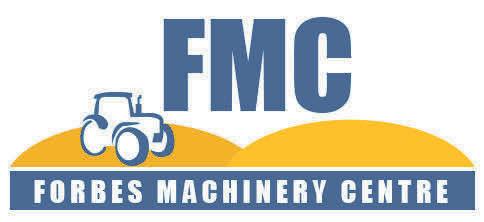




in the northern beef industry.
“Unfortunately, animal welfare codes differ between states,” Dr Penry said.
“Presently any virtual herding technology relies on an electrical pulse and audible warning.




“This technology can be used in other states but not Victoria and South Australia because it doesn’t fit within their animal welfare codes.”
Halter representatives and a farmer in their testing program attended the South Australian dairy innovation day, creating strong interest.
“There is definitely interest around how farmers could use that sort of technology to make grazing management simpler and less time consuming, particularly during the calving period,” Dr Penry said.
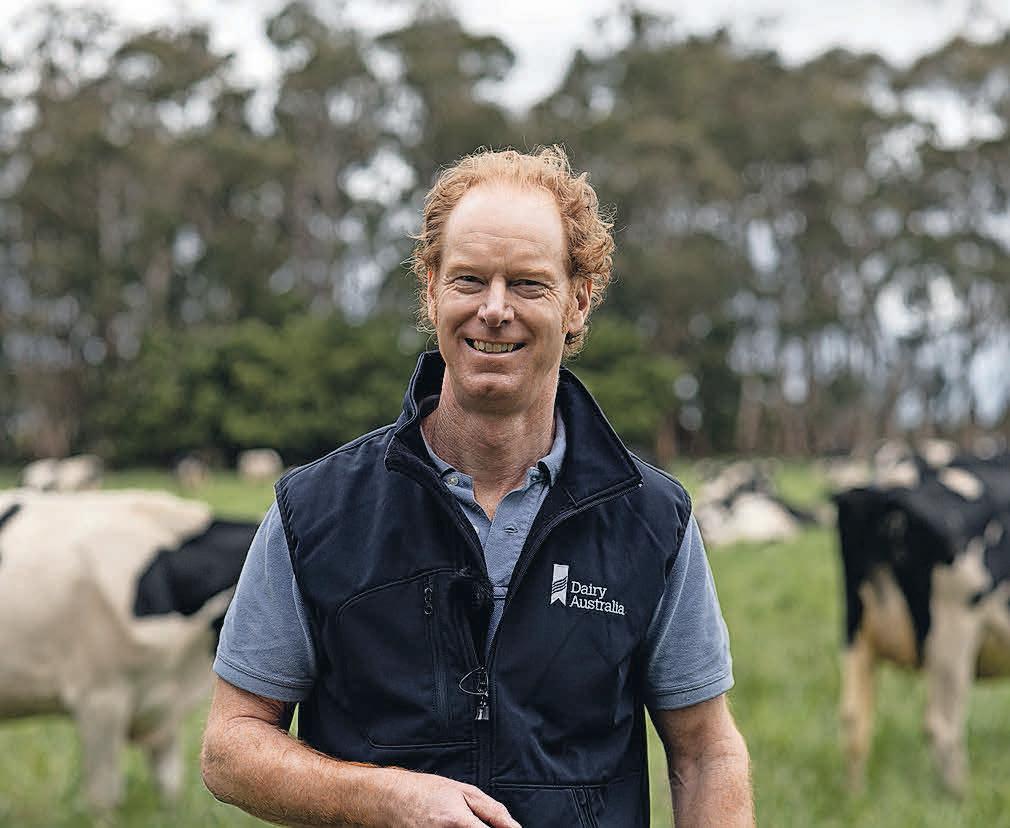
“The technology by and large seems to work and there are relatively few animals that can’t be trained on it.


“A next step for Australia would be to get a more homogenised between-states animal welfare code.”
Dr Penry said Dairy Australia believed it would be in the country’s best interests to have uniform animal welfare codes between the states.
“That’s not specifically about virtual fencing but as a general principle.”








DemoDAIRY Foundation is keen to support south-west Victorian dairy farmers to improve their knowledge and advance their careers. More information about support from the DemoDAIRY Foundation can be found at https://www.demodairy.com. au/scholarships-and-grants/ or from DDF secretary Ian Teese on 0427 358 987 or email itag@bigpond.com
Supreme International manufactures single, twin and triple auger processors with sizes ranging from 235-1877 cubic feet. Unlike most other vertical mixers that use smaller single stage planetary drives, Supreme uses the heaviest two-stage planetary drive available.Each Supreme pull type is built to order with a large variety of options available, ensuring each customer gets a unit that is designed to meet their specific needs.
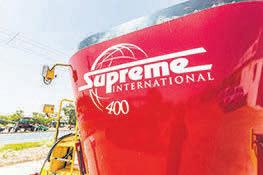
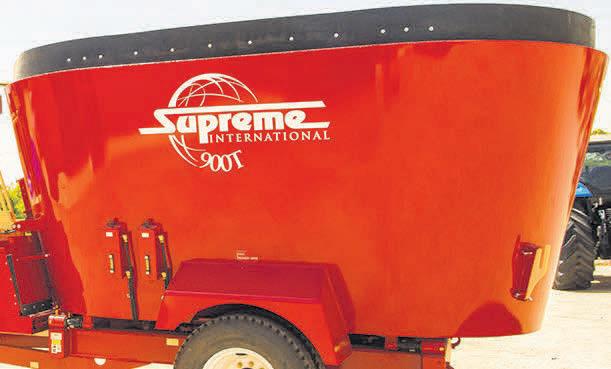


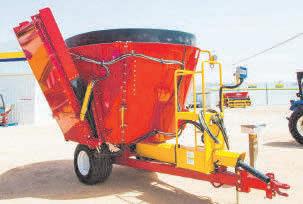



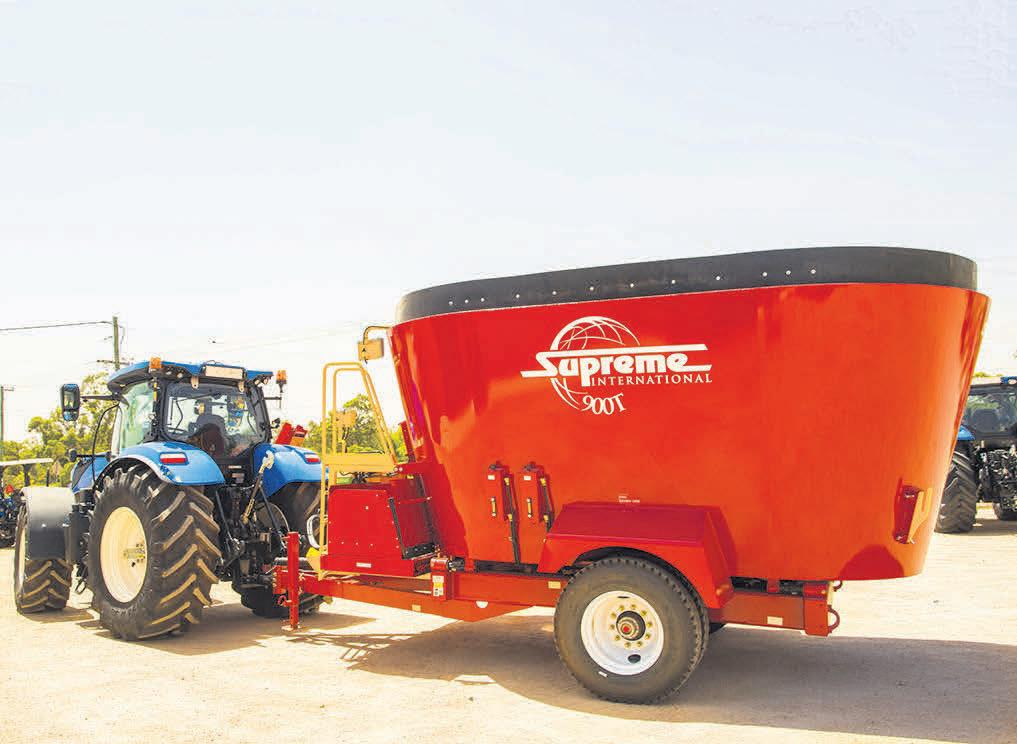



MANUFACTURED

 BY DR LES SANDLES
BY DR LES SANDLES
THE LOGICAL progression in this series is a peek into the important aspects of soil

chemistry, particularly soil structure.
However, this has been trumped at the 11th hour by a barrage of inquiries from my recent series of soil health workshops. Can we do the right thing by the planet and future generations, and make money too?
To answer this question properly, we need to understand the difference between profit and profitability.
It is one thing to reduce the costs — thus making higher profit on every litre — but another to be more profitable. This means making enough money in total to ensure your business, and you, continue to thrive.

It can be done. There are several peerreviewed studies which demonstrate the profitability of regenerative farming.


A 2018 comparative analysis of 20 US corn growers over three years reported the regenerative system was nearly twice as profitable (+$130/acre) as conventional corn-growing despite having lower grain yields (-29 per cent).
Further, an economic analysis released by Boston Consulting Group and the World Business Council for Sustainable Development concluded that farmers could expect a 15 to 25 per cent increase in profitability after transitioning from conventional to regenerative agriculture.
The story is much the same in Europe. Fifty Belgian farms representing a diverse range of enterprises had the profitability of their farms examined over 2018-19. Those taking a regenerative approach were 30,000 euro/year (EBITDA) better off than conventional farmers despite reporting lower yields.

Back home, the data is a little murky.
The Graziers with better profitability, biodiversity and wellbeing report, reported that over the decade 2006 to 2016, NSW regenerative farmers often made more profit per kg of wool, lamb or beef than comparable conventional farms, however, diving a bit deeper we see their productivity was substantially lower and thus overall profitability (return on assets) was lower.

A big deal was made of the profit levels in dry years, and that in these, levels of regen farm profits were similar to those of the ‘elite’ producers. This is singularly due to lower stocking rate.
This highlights two critical points, particularly for Aussie farmers.
The first is that we have the most diverse (risky) agricultural landscape on earth, and so will expect much more variable responses to implementing regen ag practices ad hoc than elsewhere.
The second critical point is the journey from conventional to regenerative farming must preserve productivity (eg. total milk out the gate) while reducing pasture growing costs (less chemicals, fertiliser, fuel, labour), and be sustainable. My own experience relates to our (4Sight’s) RESTORE program, which is a science-based, systematic application of proven regen ag practices.
It consistently delivers a 25 per cent increase in pasture growth, and a three-litre per cow increase in daily milk yield, taking care of the productivity concern.




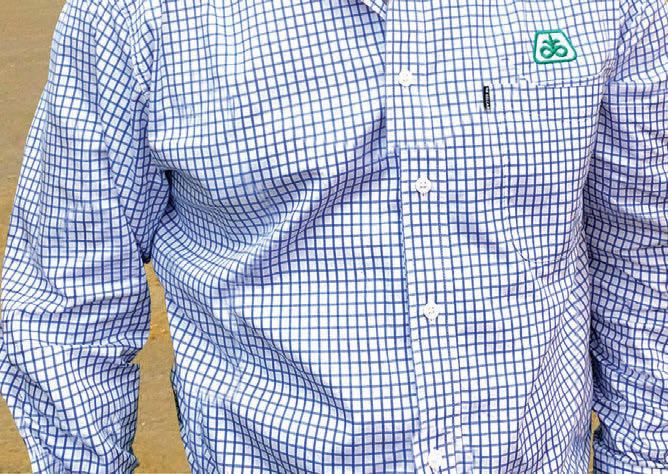

The cost of production is also massively reduced by eliminating the need for P fertilisers, reduced N requirement by 49 per cent and dropped irrigation requirements by 39 per cent, and therefore, massively reducing pasture production costs.

So that’s a big yes from me on profitability.

DairyFeedbase aims to improve the performance of soils and pastures in a way that benefits both cows and the environment.





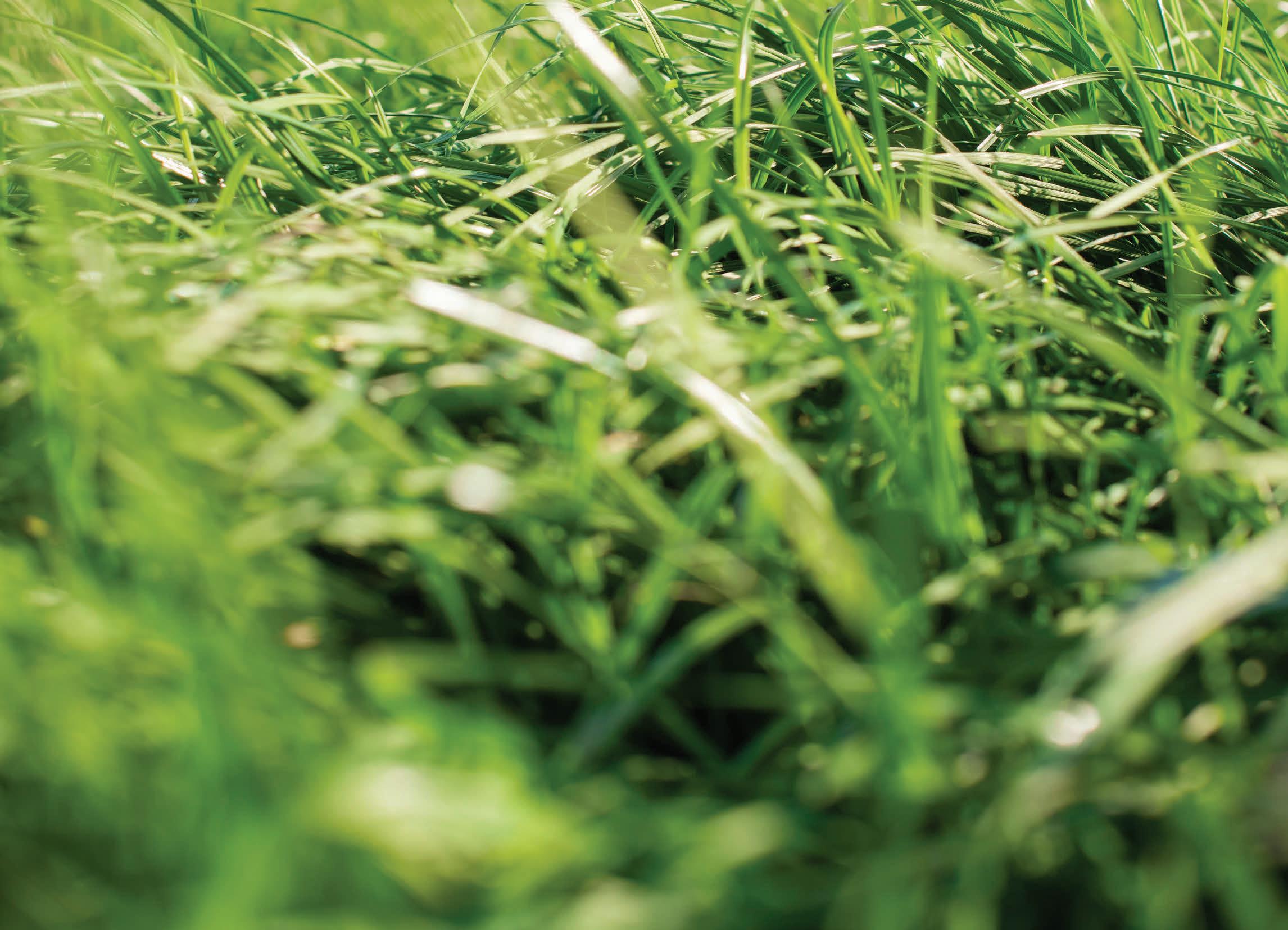



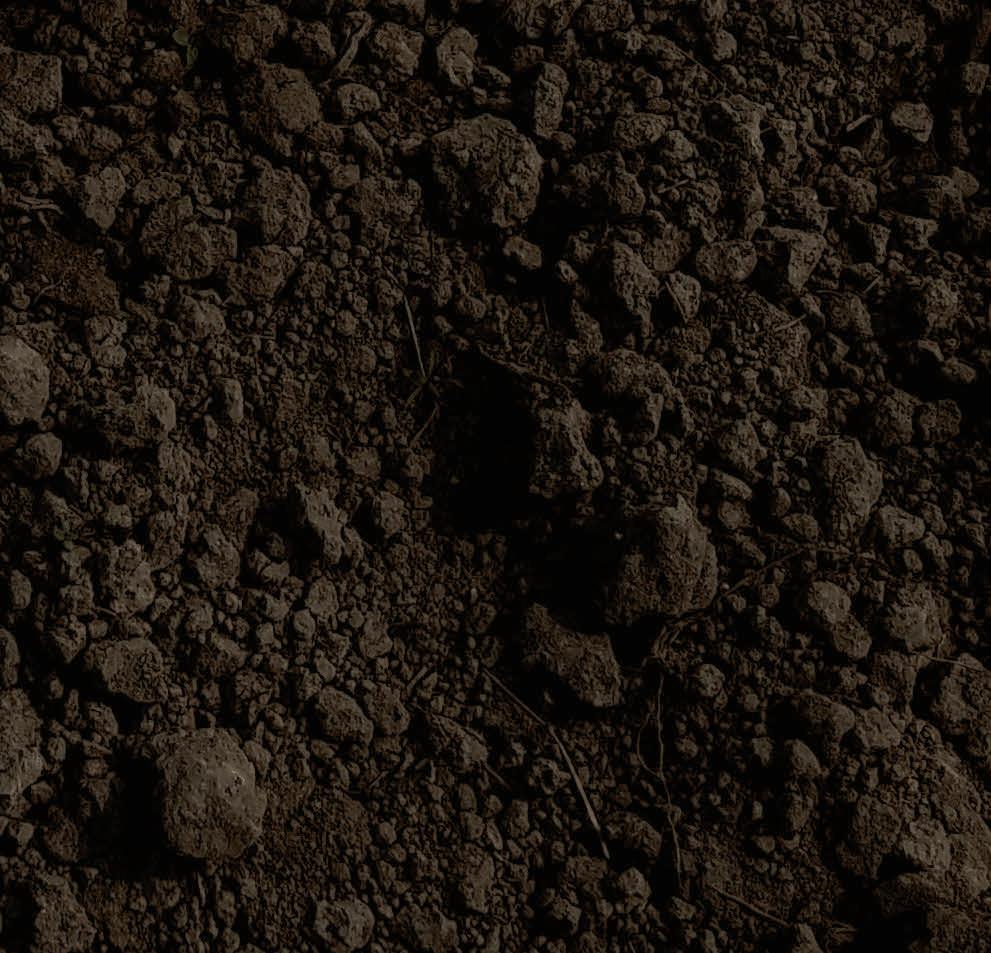


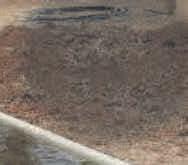
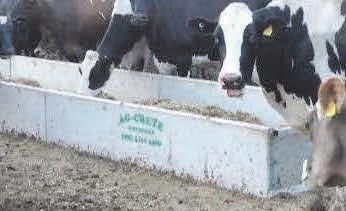
















DAIRY AUSTRALIA and the Gardiner Dairy Foundation have welcomed the latest injection of funds into the DairyFeedbase program.
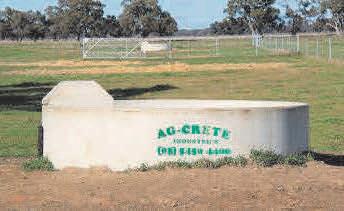
Victoria’s dairy industry has partnered with the Victorian Government to transform feedbase management on farms and to minimise their impact on climate change and the environment.
Victorian Agriculture Minister Gayle Tierney announced the next stage of the $42.5 million DairyFeedbase program on August 11, which will deliver six transformational projects across soils, forages and animal nutrition over the next five years.








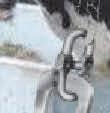



From researching soil health and pasture composition changes, to measuring and reducing methane emissions, the six projects will aim to increase the profitability and productivity of dairy farms while reducing their impact on the environment.
The projects will also link to other national research under way and make the most of Victoria’s world-class facilities at the Ellinbank and Hamilton SmartFarms and AgriBio, located at Bundoora.

“DairyFeedbase is a leading example of the dairy industry working with government on medium-term, high impact science that will improve the performance of soils and pastures in a way that benefits both cows and the environment,” Dairy Australia chair James Mann said.

“The need to address a changing climate is essential and science has a critically important role.”




Gardiner Dairy Foundation chair Len Stephens said the foundation was proud to support innovative projects like DairyFeedbase to ensure a sustainable and profitable future for the dairy industry.
“This successful collaboration has delivered high-impact innovations through research, allowing dairy farmers to apply new information for productivity growth and mitigation of climate change risks,” Dr Stephens said.
Since 2017, the DairyFeedbase program has worked closely with the dairy industry and developed a range of farmer-ready products and tools — including satellite and sensor technologies to measure pasture production and quality across their farms.
The program has also made research breakthroughs such as optimising herd nutrition to boost productivity in a way that is resilient to the challenges of increasing temperatures and climate variability.
Together with the sister program, DairyBio, the economic benefits are anticipated to exceed $1 billion by 2030 and demonstrate the programs’ potential for enhancing farm profits, milk production and herd health outcomes.
To learn more about the DairyFeedbase program, visit: dairyfeedbase.com.au




NORCO, AUSTRALIA’S oldest and largest dairy co-operative, took a fun, interactive and educational display to Queensland’s biggest agriculture show in August.
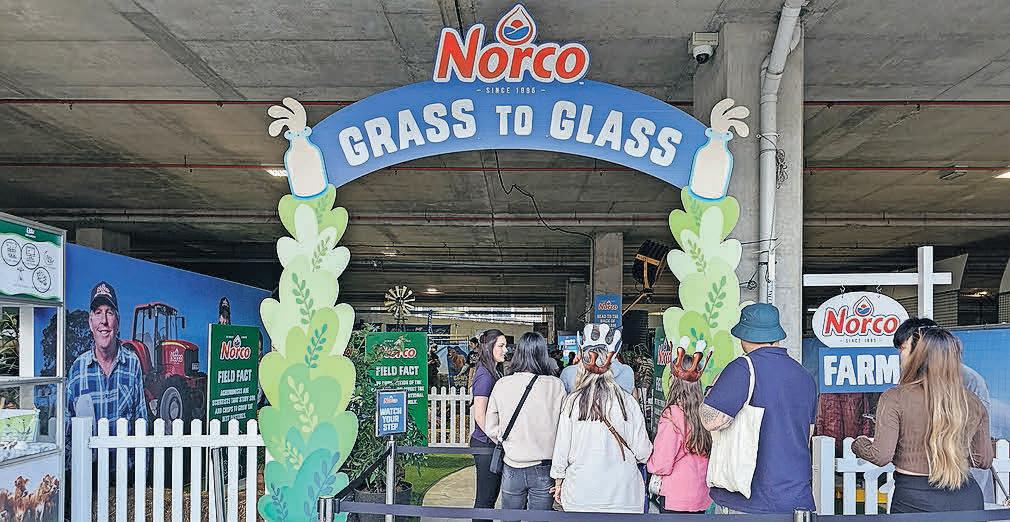
With research revealing that one in four Aussie children aged five to 12 think their food originates from a supermarket shelf, the immersive ‘Grass to Glass’ experience at EKKA aimed to plug the knowledge gap by bringing the farm to life, albeit with a modern twist.
The multi-sensory ‘Grass to Glass’ combined AR technology and real-life farm experiences to showcase each step of the farming process, via a four-zone learning trail where guests will move from the working farm to the Norco factory, to sampling milk.
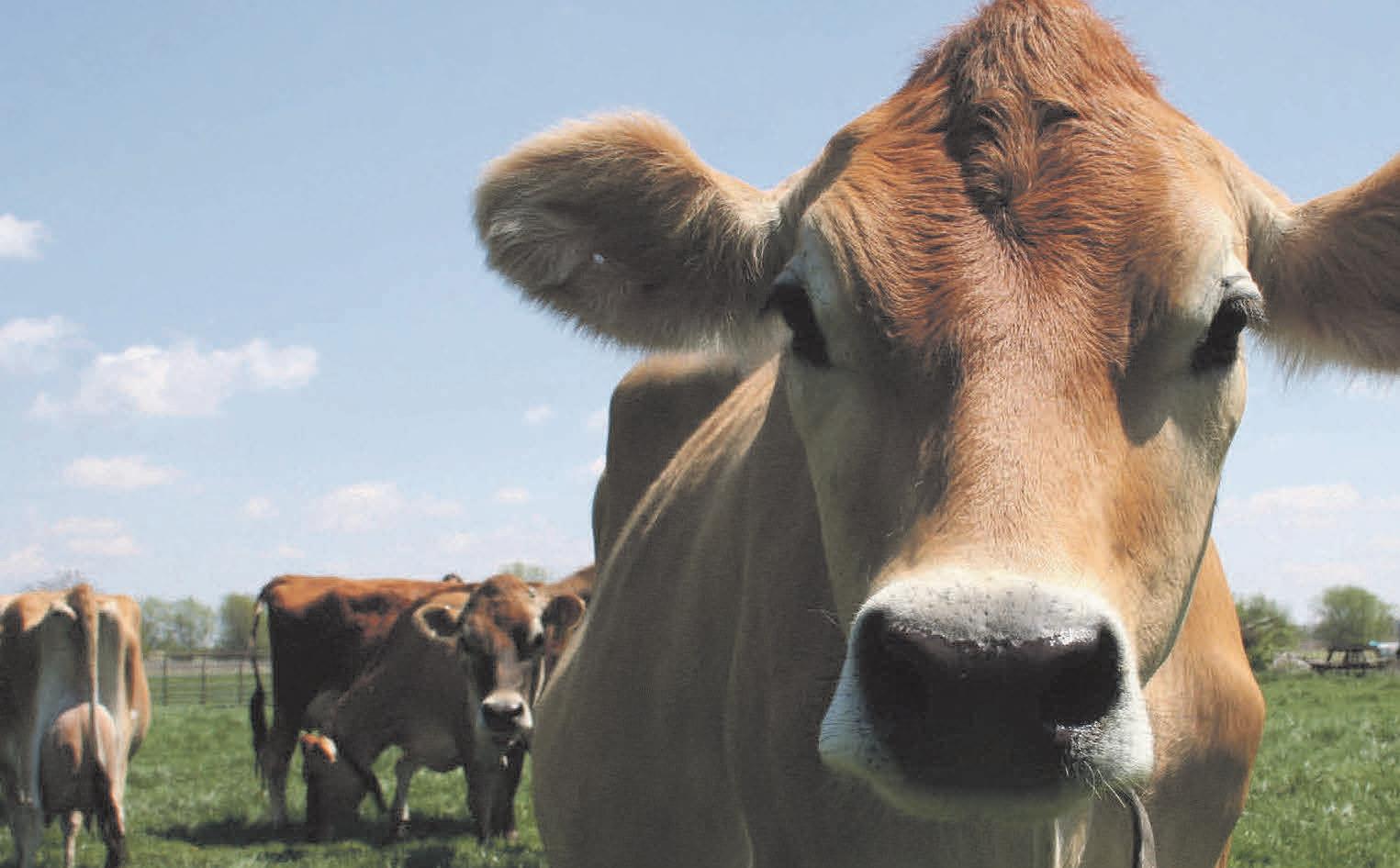
The four sensory zones included a mix of outdoor games, a cinema experience, educational facts and a Norco FIRST augmented reality game series ‘Cow’s Play’.
Families attending EKKA also had the opportunity to attend several milking demonstrations, learn how to make cream and butter, and
try their hand at milking a cow. which was a popular experience at last year’s show.
Norco dairy farmer Chris Eggert said it is important to show the next generation how farms operate and where food comes from.
“Many children have never had the chance to visit a farm and that’s probably half the reason they think their food comes from the supermarket trolley,” Chris said.
“As consumer preferences change, farmers are constantly adapting the way we choose to farm, and it’s often quite complex.
“It’s important people are educated, know where their food comes from and appreciate the hard work that’s put in by farmers right across Australia to deliver fresh, nutritious food and drink to our kitchen tables.”
Norco’s commercial and strategy general manager Ben Menzies said Norco’s continued investment and participation at EKKA reflects its commitment to championing Aussie dairy farmers and the integral role they play in Australia’s rural communities.

“The EKKA is a beloved and iconic event for Queenslanders, and to be part of it for many years is an absolute honour,” Ben said.
“It’s always a wonderful time where country
SKIOLD VMS
CLASS LEADING GRAIN MILLING TECHNOLOGY

UNPARALLELED MILLING EFFICIENCY AND ENERGY CONSUMPTION
BETTER UTILISATION OF YOUR GRAIN EUROPEAN QUALITY AND MANUFACTURED MULTIPLE DISC MILL SIZES AVAILABLE
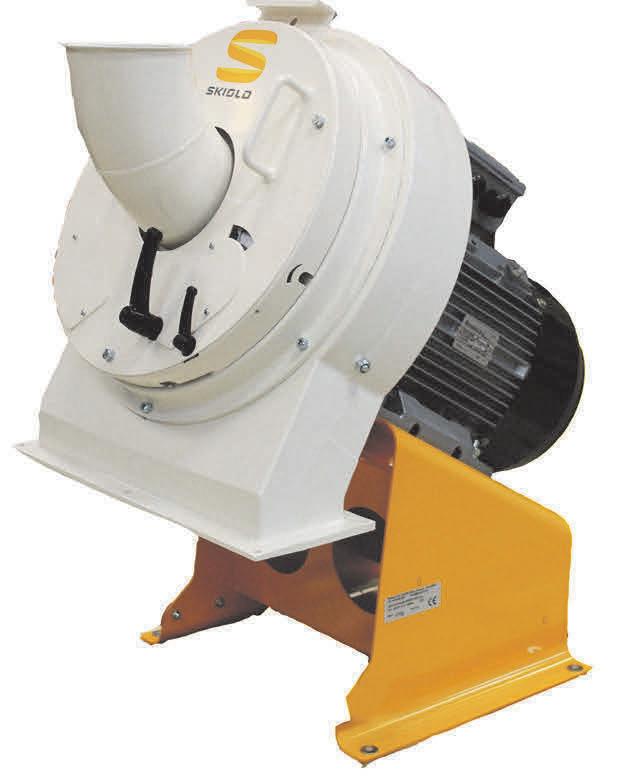
and city communities come together to celebrate the best of Queensland’s agricultural industry and have some good wholesome family fun that is remembered for years to come.”
Milk drinkers across the country have helped Norco raise $87,913 for Black Dog Institute and the thousands of people in regional areas who need mental health support.
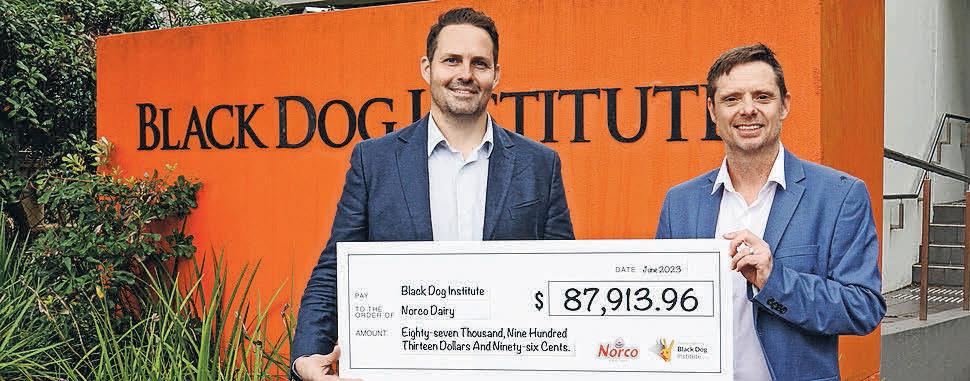
With nearly one-third of Australian farming communities admitting a decline in their mental health and close to half having had thoughts of self-harm or suicide, the money will go to help fund research, resources, and digital tools, which are particularly essential in regional areas where access to traditional mental health support is limited.
The funds were raised through a promotion where 5¢ of every Norco-branded white milk product purchased at Coles throughout March and April was earmarked for donation to Black Dog Institute.
The Norco and Black Dog Institute partnership was formed following research that found close to one-in-10 farmers felt unsupported through their mental health issues and one-in-seven could not access mental health services.
Black Dog Institute chief scientist Professor Samuel Harvey said there was a clear need for better access to mental health support and it was especially prevalent among people living in regional and rural areas of Australia.
“Regional and rural Australians deal with drought, bushfire, floods and isolation on top of all of life’s other pressures, yet access to mental health support is less than a fifth of the rate of people in cities,” Prof Harvey said.
“We are beyond grateful for partners
like Norco who want to help and show their support in any way they can.
“We will be putting Norco’s much-needed funding to immediate use, including an Adult Wellbeing Program research project and a digital therapy treatment model application to be used alongside traditional face-to-face methods of mental health support.”
Norco’s commercial and strategy general manager Ben Menzies said it was fantastic to see so many committed Aussie consumers supporting the backbone of this country.
“Thank you to all our loyal customers who chose our dairy milk and generously donated to this very important cause that hopes to help address the issue of mental health in regional communities,” Mr Menzies said.
“Being a 100 per cent farmer-owned co-operative, Norco takes immense pride in its commitment to supporting our farmers, their families and the communities in which they live and work, and it’s incredible to see this enthusiasm extended to our customers who love what our farmers produce.
“Norco is honoured to have been able to support Black Dog Institute and the vital work they do for Australians.
“With the record number of people needing support, the funds raised is essential and will help strengthen our regional and rural communities.”
If you or anyone you know needs help, call Lifeline on 131 114.
Flexible Augers • Pencil Augers • Mixers • Cleaners • Control Systems Complete feed systems also available


SPEAK TO A SKIOLD VMS REPRESENTATIVE ABOUT YOUR NEXT FEED MILL

 Norco brought the country to the city with its ‘Grass to Glass’ display at EKKA in Brisbane.
Norco brought the country to the city with its ‘Grass to Glass’ display at EKKA in Brisbane.
A SHORTAGE of regional veterinarians is being attributed to the stress which comes with the vocation and a glut of pets purchased during the COVID-19 pandemic.
Dubbo cattle producer Shane Kilby raised awareness of the issue at the NSW Farmers Annual Conference in July.
“As a livestock producer it’s vital to have a good relationship with a large animal veterinary practice so you can get the care you need,
Betta, Tasmania’s most recognised milk, just got even better, with a new range of high-protein, lactose-free milks.
Betta Milk has added a high-protein lactose-free milk to its range of white milks, creams and flavoured milks. Already rich in calcium, vitamins and minerals, the new high-protein lactose-free full-cream milk contains 50 per cent more protein than Betta’s regular full-cream milk.

Betta’s lactose-free milk is made with cow’s milk, but has been treated to remove the lactase enzyme which may cause digestive problems such as gas, bloating and indigestion.
It is more easily digested than regular milk, especially for those who are lactose-intolerant. The Betta range already includes full-cream and light lactose-free white milk options.
Betta Milk is part of the TasFoods family. TasFoods CEO Scott Hadley said the new high-protein lactose-free milk aligned with major consumer trends across food and drink products.
“We know that many consumers are choosing higher protein foods and drinks for their many health benefits, and that lactose-free products are also fast gaining popularity for their easy digestibility,” he said.
“We saw an opportunity to meet both trends with a delicious-tasting staple that appeals to those with lactose intolerance as well as those pursuing a healthier lifestyle.”
The Betta Plus range of flavoured milks has also introduced new lactose-free flavours, with Betta Jive lactose-free Chocolate and Betta Plus lactose-free Double Espresso available now. The Betta Plus flavoured milk range will also launch a lactose-free Protein Plus range, with 30 grams of protein per serve.
when you need it,” Mrs Kilby said.
“Vets are indispensable for us, whether it’s pregnancy testing, calving or even just looking in on a sick animal.
“Sadly we’re seeing a decline in the number of large animal vets and while those that are around do their best to fit you in, we can’t let the numbers continue to slip.”
Mrs Kilby suggested financial incentives as a means to attract more students into veterinary science.
“If we could get the same sort of HECS
forgiveness for vets that teachers, doctors and nurses can access, we might get more vets.”
Shepparton Veterinarian Clinic practice manager Katie Singleton-Folley attributed the lower number of vets to the amount of pressure associated with the workload, high HECS debts of students and the impact of COVID.
“The amount of responsibility in the profession brings with it a high level of stress,” Ms Singleton-Folley said.
“I guess it probably started pre-COVID but during the pandemic there was a saturation of

animals due to home isolation when people bought more pets.
“And there’s a HECS debt which is very large after so many years of study.”
Ms Singleton-Folley said there was also a shortage of support staff due to low wages but people were drawn to the industry for the basic love for animals.
“It’s a wonderful feeling when something comes in and you do the diagnosis and then have the capacity to heal, the capacity to save a life.
“It’s quite rewarding.”
Disease prevention is clearly the desired outcome of a successful vaccination program.
However, understanding the risk of disease within a herd is challenging and often decisions to include or remove particular vaccines are not straight forward.
Documented vaccination protocols have been a frequent request from producers this year, but complete plans rarely translate between enterprises due to a range of factors.
We currently have 17 individual protocols for vaccines and it is not uncommon for a single farm to use three to five unique products.
Creating the complete protocol is complex but consideration to a few key areas will make it easier.
Firstly, consider disease prevalence on-farm and within the district.
Each farm has intrinsic requirements regarding vaccination — some are not negotiable, others are developed over years of observation and success in reducing
disease incidence.
Industry trends of vaccine use and disease prevalence may also be reviewed to improve your decision making.
Your local animal health adviser will be able to highlight benefits of existing and new vaccines that may not have been considered.
Secondly, weigh up the risk of disease versus vaccination.
Commercial vaccines are accompanied by a wealth of supporting information and resources to assist assessment of individual herd risk and the economic implications of both outbreak and endemic disease.
Ask your vet two questions. Do I still need to vaccinate?
Should I be using more vaccine? New vaccines are currently available and registered for use on dairy farms, you will be more informed of your options.
Thirdly, create a complete plan that covers all relevant animal classes.
Check that the protocol clearly covers all animal classes (and potential introductions) on-farm, including calves, heifers, cow and bulls. Multiple joining and calving periods increase complexity. Ensure you have the ability to complete as per protocol, having appropriate resourcing vaccination on hand at the right time.
Finally, educate your team for the best outcome and review annually.
Compliance to the program may be challenging, especially with complex herd structures.

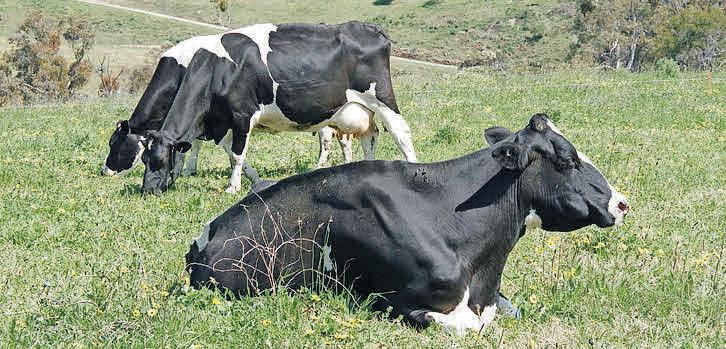
Having the team well informed and trained drives better outcomes in disease prevention and management. Staff training sessions can drive improved vaccination technique and compliance to protocols.
The vaccination program should be visible to all staff and considered a ‘live’ document.
Our approach is to review the vaccination programs yearly as a minimum. Reviews establish future requirements and also assesses compliance on the existing/ previous plan.
If you need assistance call your local dairy vet — our ProDairy team are more than willing to assist.
Dr Luke Morison is a key member of the ProDairy team, working for Apiam Animal Health as a veterinarian and Business Manager for Dairy.

NUISANCE FLIES (house flies and stable flies) can be a significant problem for humans and animals.
Flies are not only uncomfortable for animals and workers but also vector organisms that cause disease including golden staph — the primary cause of mastitis.
Fly-stressed animals tend to use up extra energy, leading to reduced production. They often bunch together in an effort to reduce surface area. This can lead to overheating and weight loss.
Reliance on the use of chemicals to control nuisance flies has several disadvantages: Development of insecticide resistant fly populations.
Potential contamination of the environment and meat/milk products.

Harm to fly parasites and other beneficial insects.
Bugs for Bugs says it has a reliable and effective biological alternative — a nuisance fly parasite mix.

This includes three wasp species, which are all efficient biocontrol agents of nuisance flies.



The Bugs for Bugs fly parasites are tiny wasps (2mm to 3mm in length) that are naturalised to Australia.

They only target nuisance flies and are harmless to other animals and humans.
Adult female wasps lay their eggs in fly pupae. After hatching each wasp larva feeds on the fly pupa host, ultimately killing it before it can develop into an adult fly.
Creating a complete vaccination protocol for your herd is complex, but consideration to a few key areas will make it easier.





After about three weeks, an adult wasp emerges to mate and continue the cycle.
Fly parasites are easy to handle and release. They are supplied as the immature stage (parasitised fly pupae). These should be placed into a release unit positioned near fly breeding sites (for example: manure, silage pits, drains and sedimentation basins).

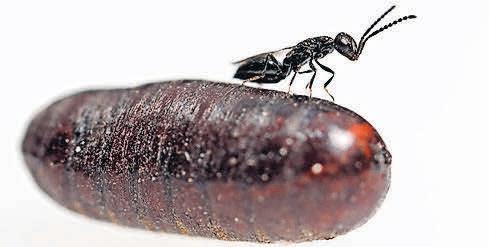
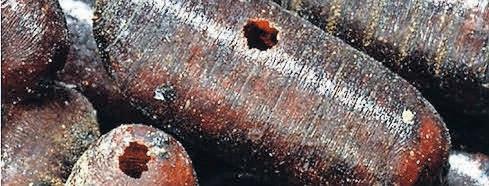
Release units offer protection to the parasite mix while they are in the vulnerable pupal stage prior to adult wasp emergence. These release units are available from Bugs for Bugs. For dairy environments, Bugs for Bugs recommends releasing around 200 fly parasites per animal per fortnight from early spring to autumn. Warmer areas in the north with persistent nuisance fly problems benefit from year-round releases.
Bugs for Bugs encourages farmers to adopt an integrated pest management (IPM) approach to nuisance fly control, which includes: Practice good sanitation. This impedes fly breeding and assists the establishment of natural enemies including wasp parasites.

Regularly remove fly breeding substrates such as manure, spilt feed and vegetation. Carcases should be covered completely (preferably more than 1m deep) to prevent blowflies from breeding.
Mow vegetation around feedlots, sedimentation systems and effluent ponds to reduce areas where flies can shelter.
Use yellow sticky traps or rolls (also available from Bugs for Bugs) to mass trap adult
flies wherever practical.
Fly parasites are sensitive to chemicals. If required, Bugs for Bugs suggests the use of larvicides (for example: cyromazine) which are less harmful to wasps and the environment and provide better control over time. Granular baits and bait strips also work well with biological control.
For further information on how these fly parasites can reduce the nuisance fly problem on your farm, visit: www.bugsforbugs.com.au
Bugs for Bugs fly parasite consultant David Loxley on 0459 974 960 is also available to answer any questions.





ProDairy can assist you with the development of a tailored plan:



• On-farm visit by a ProDairy veterinarian.

• Review of the current biosecurity principles, the major risks and actions taken to reduce those risks.


• Development of a customised biosecurity plan. Visit prodairy.com.au for more information.

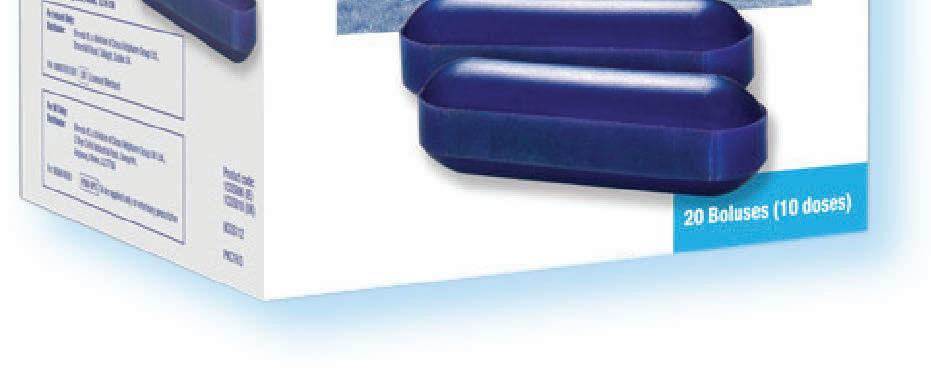
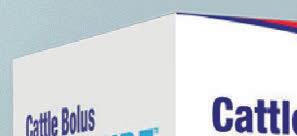

PROMOTE PRODUCTIVTY REDUCE PATHOGENIC BACTERIAL LOAD IMPROVE HEALTH
What if you could proactively improve calf and cow health sothey can better withstandchallenges, including those caused by mycotoxins?
What if you could control calf diarrhea before an outbreak, and reduce the incidence, severity and duration of other common diseases that affectthe feedconversion efficiency of lactating cows and your bottom line?
What if you could add nutritional insurance to every stage of your cattle’s lives resulting in healthier heifer calves that join the milkingherd ready to contribute at a high level, and lactating cows that spend less time off feed.
farming, the individual components within the milking system play a key role in the production of good quality milk.
GEA says having well maintained equipment that functions correctly has many benefits within a dairy farming system, including:
Increased milking efficiency: If all equipment within the dairy is functioning optimally, this can significantly decrease milking times and increase milk yield.
Improved animal health: Well-maintained milking equipment is less likely to harbour bacteria which can cause mastitis. If the milking system is operating optimally this can also prevent over-milking and decrease teat end damage.


Providing a comfortable milking routine: Well-maintained equipment can provide a consistent and comfortable milking routine for cows and staff. This helps to reduce stress and improve animal welfare.
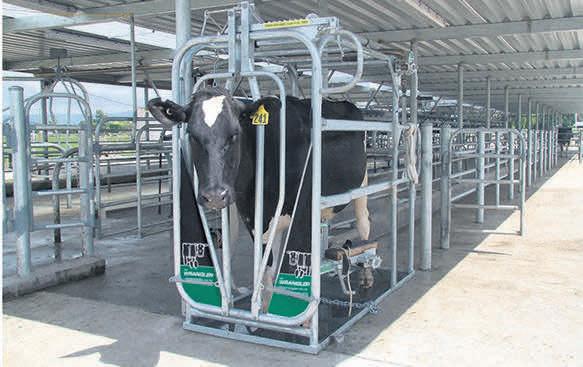

Less emergency breakdowns: Preventative maintenance reduces emergency breakdowns, leading to lower costs and reduced stress.
GEA says two key components within this system are the milking clusters and pulsators. Both pieces of equipment play a crucial role in ensuring quick, complete, gentle and safe milking.
For a cluster to maintain an effective, accurate and complete milking every time, the cluster must be maintained, cleaned and inspected regularly.

GEA recommends servicing clusters at least once every 12 months. This service involves removing milk residue and dirt, checking for air bleeds, and replacing any worn or damaged parts, such as gaskets, liners, tubing, hoses, etc.
Worn gaskets in milking clusters can harbour bacteria and affect milk quality.

•Agglutinates and binds E. coli and Salmonella enterica.
Pulsators play an important role in ensuring adequate massage is applied to the teat end by the liner to relieve congestion caused by vacuum under the teat.
•
and bind E. coli and Salmonella enterica
•Reduces the incidence, severity and duration of mastitis and cryptosporidiosis infection.
• Reduce the incidence, severity and duration of mastitis and cryptosporidiosis infection

•Reduces blood stress markers during and after transport and temperature stress.
• Reduce blood stress markers during and after transport and temperature stress
Correctly functioning pulsators therefore have the potential to improve milking efficiency and teat health. GEA says it’s important to service pulsators every six to 12 months, depending on usage.
•Minimises cytotoxic damage caused by a variety of mycotoxins and carryover of aflatoxins in milk.
• Minimise cytotoxic damage caused by a variety of mycotoxins and carryover of aflatoxins in milk
• Improve weight gains and performance in calves and milk yields in lactating cows


•Improves weight gains and performance in calves and milk yields in lactating cows.
Distributed By:

GEA has a team of experienced and qualified technicians who can inspect, repair and replace any part of milking machines using GEA high-quality parts and equipment to ensure that milking machines meet the highest standards of hygiene and efficiency.
GEA has a special offer of up to 25 per cent off selected service kits for Classic 300 Clusters, IQ Clusters and AutoPuls/StimoPuls Pulsator service kits.The service kit promotion is available until November 30.
For more information, contact your local GEA dealer, call (03) 8877 9999 or go to: www.gea.com

RELIABLE AND accurate data collection is the cornerstone of Jake Coates’ dairy breeding program.
The western Victorian dairy farmer says the more he knows, the better when it comes to genetics and breeding.
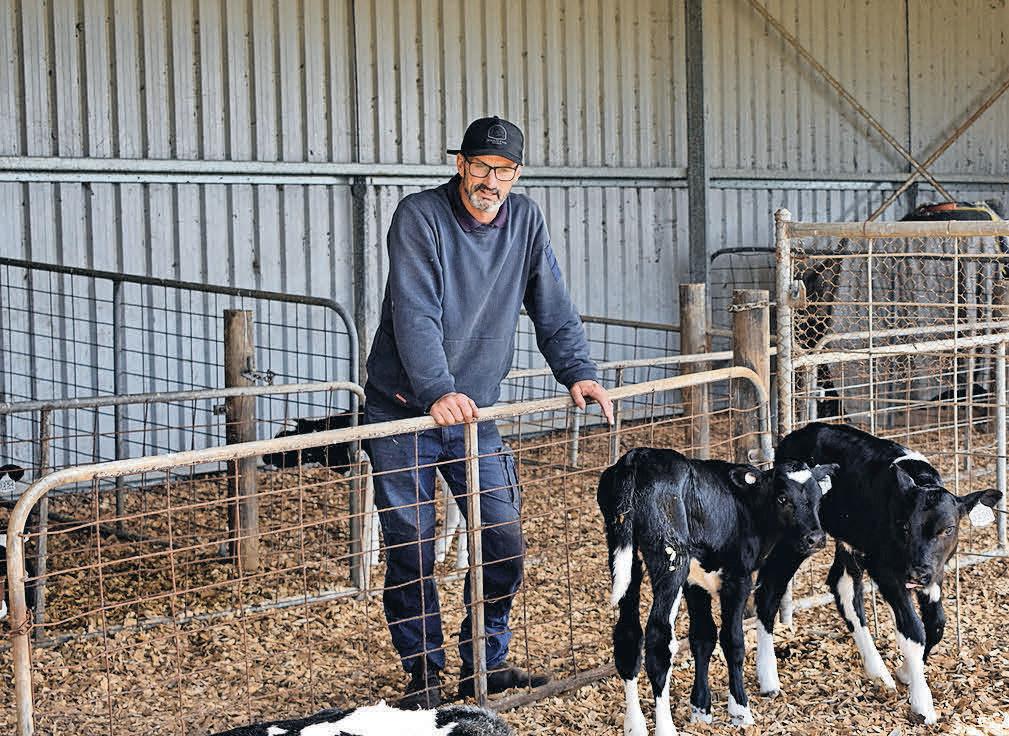
“Genomics is yet another tool we can use to gather more data and build more reliability into our decision process,” Jake said.
Jake, his wife Olivia, daughter Charlee (14) and son Isaak (13) milk 150 Holsteins on 140 hectares at Allestree, near Portland, Victoria.
Their cows graze perennial pastures throughout the year, with an extra 120 hectares of out-paddocks used for growing young stock and expanding their small beef program.
For decades, their herd has remained consistently in the top 10 per cent for Balanced Performance Index (BPI), the index that reflects the traits that contribute to profit.
Jake is confident he can maintain his herd’s ranking by concentrating on genetics supported by reliable data.
He uses DataGene’s Good Bulls App to guide his bull selection and the Genetic Progress Report to monitor the impact of his decisions on the herd’s genetic merit.
They give him the confidence to discuss the bull recommendations given by breeding sales representatives and ensure the bulls he selects reflect his breeding goals.
“The Good Bulls App is gold,” Jake said.
“I can look up the bulls they are suggesting, see if they fit my system, and avoid the bulls that
may not be complementary to what I need.”
Using the filter tool, Jake sets a benchmark for priority traits and enjoys tweaking the selection criteria to customise a team of bulls that best suits his breeding program.
“It gives me the power to ask the questions and tell the rep what I want.
“I tell them ... does this bull fit our parameters? Is this bull going to take us backwards? If they don’t fit — then they need to come up with something else.”
In the past, Jake relied solely on herd test results and management issues when making his selection and culling decisions.
He is now using genomic testing to apply additional pressure on replacement heifer selection.
The genomic results have also given Jake the confidence to use traits he hadn’t used previously.
“A trait like daughter fertility was not something I had considered greatly,” Jake said, admitting that prior to genomics, he had viewed fertility as influenced mostly by nutrition and management.
“Now with genomics, I find I am more open to newer traits and am more confident to include them in my selection parameters.”
Jake’s goal is to have every cow in the herd genomically tested — a target he hopes to reach in a few years.
DataGene tools, such as the Genetic Progress Report, are enabling him to monitor his breeding program by highlighting the impact sire selection has on his genetic progress.

The report recently alerted Jake to a brief drop in his herd’s genetic trajectory that was a result of using a bull that deviated from his traditional selection process.
“If it wasn’t for the tools to show us those results, we wouldn’t understand the impact of the decisions we made,” Jake said.
Returning to his usual selection priorities, he quickly regained his herd’s upwards trend.
“There’s no point in using a bull if he is not as good as the cow he will be going over. Using anything less than that is taking a step backwards.“

HERE IS the lowdown on the top females and the top herds from the August Australian Breeding Values release.
Holsteins
Carenda Jeronimo Vida continues her reign as the number one BPI Holstein cow and one of only three Holstein cows above 600 BPI. Vida is classified VG87 as a three-year-old and is a polled daughter of the high ranking bull ABS Jeronimo (29HO18698). Vida has a BPI of 634.

The number two cow comes from the same herd and the same cow family although you have to go back many generations to find a common ancestor. Carenda Drastic Vodka 425 GP82 is also polled and has a BPI of 621. A fantastic effort from Western Australia’s Kitchen family’s Carenda Holsteins.
Jelbart Dairies of Leongatha South, Victoria is reinforcing its status as the go-to place for high Sustainability Index cattle. The number one Sustainability Index Holstein

cow is ‘16229’ with an SI of 1202. A daughter of Carenda PEMBERTON, ‘16229’ is one of the breed’s more extreme protein ABV cows.

After holding down top spot for three ABV runs, ‘14116’ slips back to second spot for Sustainability Index. A daughter of S-S-I Headway Alltime (7HO13264), she is also from the Jelbart Dairies herd. She combines a high ASI with good ratings for Survival and Fertility ABVs.
Jelbart Dairies is also the owner of the number one genomic heifer in the Holstein breed with a BPI of 573. She is a daughter of the Genetics Australia bull KARAT. ‘16916’ has fantastic ratings for Daughter Fertility (123) and Mastitis Resistance (112) ABVs. With very high ABVs values for health and fertility traits, it is not surprising that ‘16916’ is also the highest Heath Weighted Index (HWI) female in the Holstein breed.
All of the owners of these top animals are members of GINFO, the dairy industry’s Genomic Information Nucleus that underpins genomic testing through the provision of high-quality performance records.
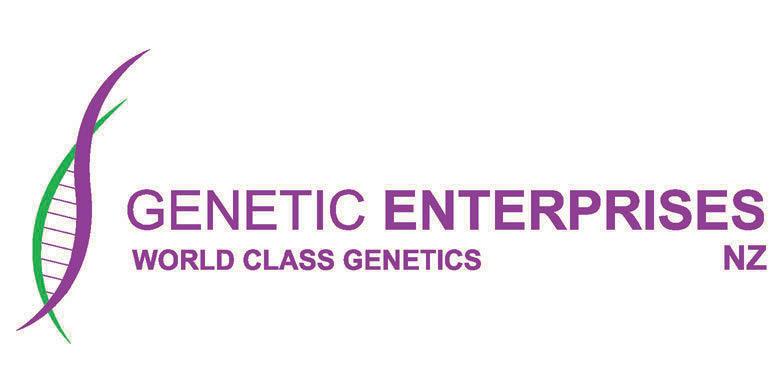
One of the grand matrons of the Jersey breed, Cairnbrae Valentino Daisy 11 EX-94, continues to lead the Jersey BPI list with a BPI of 481. Bred by Alan and Janine Carson she is now owned by the Singh family of Kyogle, NSW. Daisy 11 is also the number one Sustainability Index cow at 103. She is the dam of the high ranking bull ROULETTE available through Agri-Gene.


For the third run in a row, the top Jersey genomic heifer is Beulah Doug T2 Fairy bred by Daryl and Lani Hoey of Wonthaggi, Victoria. She has a BPI of 401 with solid ratings for most of the health traits. Doug T2 Fairy is also the top Sustainability Index genomic heifer.
The top Health Weighted Index female of all ages in the Jersey breed is ‘6712‘, a daughter of Forest Glen Craze Tripp (29JE4213) with a HWI of 383. She comes from the number one ABV herd of the Glennen Family, Noorat, Victoria.
The top Aussie Red cow is Blackwood Park 1416 with a BPI of 433. Owned by R. and V. Clarke of Mt Gambier and bred by Jan Raleigh of Timboon, Blackwood Park 1416 is also the top Sustainability Index cow and the number three HWI cow. She is sired by VR Faber (VIKRFABER).
The top Ayrshire is a youngster with a BPI of 191. Araluen Park Rockstar Pam was bred by Trevor Saunders and Anthea Day of Willow Grove, Victoria. Her daughter, Araluen Park Athenos Pam, also owned by Saunders and Day, occupies second spot with a BPI of 174. The top Illawarra is Treeton Gloria 4382th owned by Anna Dickson (B. & J. Dickson, Terang) with a BPI of 145.
Holstein: The Emu Banks herd of Bryan and Jo Dickson has retained top spot with an average BPI of 348. Ìt is also the highest herd for the Sustainability Index at 614 and number 1 for the Health Weighted Index (HWI) at 330.

In second position on BPI is the Kaarmona herd of Rohan and Graeme Sprunt, Karimba, Victoria.Third position is occupied by Ray Kitchen’s Carenda herd, Boyanup, WA. Jersey: Con and Michelle Glennen’s White Star Jersey herd from Noorat, Victoria, is the top BPI, HWI and SI herd in the Jersey breed with a BPI of 249 and a HWI of 184 and a SI of 536. They are also the owner of the top ranked HWI Jersey female.
Aussie Reds: Ron and Sam Graham of Numbaa, NSW, again have the number one herd for all three key indices. They are also the breeders of the top BPI Australian Proven bull Beaulands Swannies (ARBCYGNET).
Illawarras: The Williams family’s Treeton herd of Meningie is the top herd for BPI (114) and HWI (106) while the top SI herd is Michael Tuhan’s Riversleigh herd of Murchison, Victoria with an average of 207.

AUSTRALIA’S OFFERING of good dairy bulls is now even better.
And this improvement in the way DataGene classifies bulls is set to ensure long-term genetic development for the local dairy industry.
DataGene, the independent and industry-owned organisation responsible for driving genetic gain and herd improvement in the Australian dairy industry, has updated the criteria for Holstein bulls to attain Good Bulls status.
From this month, if a Holstein bull features in the Good Bulls Guide farmers and breeders can guarantee that it is more than the breed average for the Balanced Performance Index (BPI).

In 2022, 76 per cent of recorded calves were sired by a bull from the 2021 Good Bulls Guide.

DataGene stakeholder relations specialist Peter Thurn said this change shrinks the offering of Good Bulls to about 750 Holsteins and a total of 1000 across all dairy breeds.
“With this update, the bottom-end of the criteria has lifted, and this has improved the average quality of the bulls that are labelled Good Bulls,” he said.
“Since the introduction of genomics, there have been more bulls available than ever.
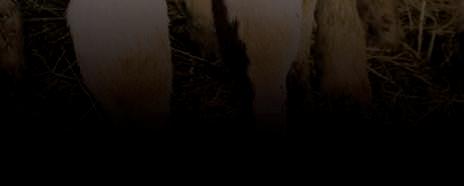







“Raising the bar — or the standard of what is called a Good Bull — ensures it is clear which bulls are the best and there’s no need to filter through huge numbers of sires.”

Mr Thurn said most dairy farmers choose up to seven bulls for breeding, which means there’s still plenty available with the slightly reduced offering.
The improvement in the Good Bulls baseline reflects the genetic progress made throughout the Australian dairy industry thanks to herd improvement tools such as genomics.


For example, the average BPI of Australian Holstein cows has risen by about 233 per cent from 2011 to 2022.





“Australian dairy has made some phenomenal progress with its genetic base, we have some great locally bred bulls as well as access to the best bulls from across the globe,” Mr Thurn said.
“It’s important to not only reflect this improvement but also put a criterion in place to ensure we can build on this.”
For more information, call DataGene on 1800 841 848, email abv@datagene.com.au or go to: www.datagene.com.au


DataGene is an initiative of Dairy Australia and the herd improvement industry.



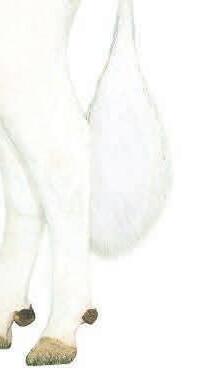




Performance Index (BPI) — Australian Proven only
Good Bulls Guide for Guernseys — Balanced Performance Index (BPI) — Australian Proven only
WHICH IS THE IDEAL COW FOR YOUR HERD:

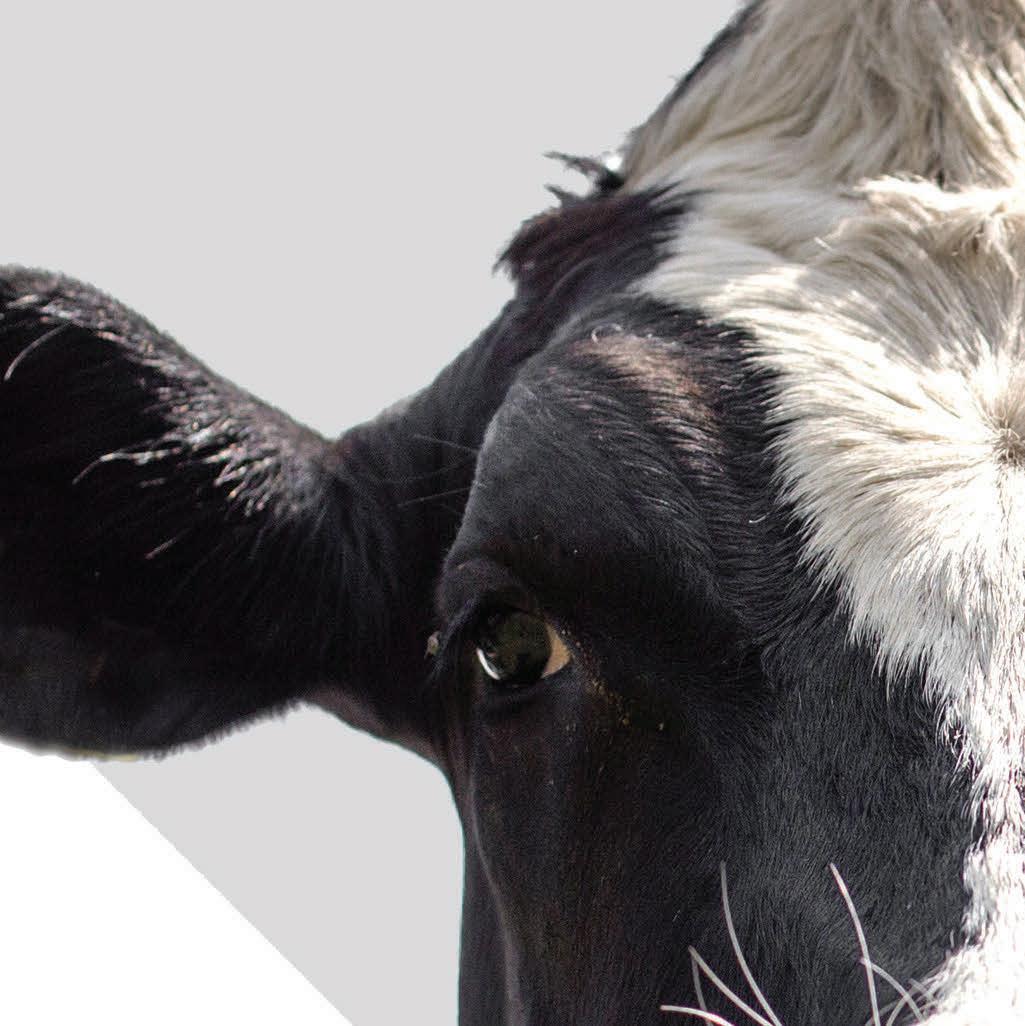
Top 10%
• Amazing type cows, getting taller each year
• Making enough milk, with respectable fat & protein
• Only lasts as long as the average cow, but more likely to die on farm
• Struggles to get pregnant on time, and consistently struggles with mastitis
Top 10% Productive Life



• Moderate sized cows not getting any taller, with functional udders
• Making industry leading production with high solids


• Lasting nearly five months longer in production than the average, and being a valuable cull cow
• Extremely fertile and having less mastitis than others
Bottom 10% Productive Life
• Cows with plenty of frame, strength and getting taller each year
• Struggle to keep up with average milk production
• Last barely long enough to cover rearing costs, and potential to die before being culled
• More mastitis and cell count than the factory wants, has significant struggles with becoming pregnant
We have evaluated over 13,000 bulls born since 2010, who have had the benefit of being selected using genomic data, and now with historical and actual production, classification, herd records for mastitis and culling, using over 15 million cow records.
ARE YOU SELECTING THE RIGHT BULLS TO CREATE LONG LASTING TROUBLE FREE COWS? CONTACT US TO HELP YOU FIND OUT WHAT YOUR MOST PROFITABLE COW REALLY LOOKS LIKE.
A BULL with exceptional production, type and fertility has been crowned Australia’s top proven Holstein sire in the latest Australian Breeding Values release.
The fact he’s ‘streaks’ ahead of his nearest rival at the top of the Sustainability Index (SI) — at 1217 — is an added bonus, says ABS Australia.
Pine-Tree HURON — at 536 Balanced Performance Index (BPI) — couples big milk, protein and breed-leading udders with high-ranking fertility and farmer likeability.
He’s the “complete package”, according to ABS Australia business operations manager Bruce Ronalds.


“This sire pretty much has everything — he’s unique in the sense that he has really high ASI (production) with good type,” Mr Ronalds said.
“He’s a really good example of how ABS uses strategic mating to develop sires for different dairy farmer breeding objectives.
“For example, HURON can be traced back to the famous View-Home Uno Hope cow, and has huge production, while other sires with similar lineage, CartersCorner DAZZLE and Carters-Corner Fc HI HOPE, are kicking goals in the show ring because of their exceptional type.
“DAZZLE is a standout, offering high Type +3.50 and Mammary +3.48 with elite Daughter Fertility of +1.6 which is unheard of.
“Bringing bulls in from the US means we get the benefit of the huge genetic pool of our parent company Genus — and its global reach — while also delivering for our local customers by only choosing sires that are profitable for Aussie dairies.”
Dairy farmers milking HURON daughters are now choosing to use the sire again, a “testament” to the quality of the bull, according to Mr Ronalds.
He also anticipates dairy farmers breeding for a lower carbon footprint and using the Sustainability Index will also look closely at HURON.
Timboon dairy farmer Jason Smith, Ja Dale Holsteins, has a HURON heifer producing 36 litres a day with a PI of 115 in a herd of 200 cows. She was recently classified 85 points as a two-year-old.
Mr Smith chose to breed with HURON because of his impressive genomic proof, US figures and his lineage back to the strong American cow family Martha Sheen.
Dairy farmers want to know that the sires they choose, work in Australian conditions and ABS delivers that.
“This HURON heifer, she has an outstanding rear udder, high milk flow and production,” he said.
“If farmers want to fill their vat — HURON is the bull they want.”
HURON’s success comes as ABS also claimed the top four positions on the proven Holstein ABV list as well as six of the eight highest ranking sires.
Mr Ronalds said dairy farmers still want to use proven sires.
“There are people who think the industry has moved away from using proven, reliable sires, but we know a lot of our sales — both Sexcel and conventional semen — are from proven sires,” he said.
“Dairy farmers want to know that the sires they choose, work in Australian conditions and ABS delivers that, consistently, through strategic breeding and selection.”
Denovo 14744 GINETTA continues his run
in second position but has improved his BPI to 523, while long-time standout ABS JERONIMO P is at number three with 504 BPI and 829 milking daughters.
One of ABS Australia’s most popular sires, Pine-Tree DURABLE, has pushed up the chart and now sits in fourth place at 479 BPI.
“It’s pretty exciting when one of our biggest sellers, DURABLE, enters the top five after adding more daughters to his Australian proof and lifting his BPI,” Mr Ronalds said.
“Then there’s DG CHARLEY, rounding out the top six, he’s the sire of DURABLE and we are getting lots of inquiry for him now.”
Genomic homozygous polled sire Denovo 4798 ESTATE PP — the number one polled and sitting in the top 10 available genomic bulls — provides an Australian outcross for those who want to quit disbudding by adding polled to their breeding criteria.

He is now one of 34 homozygous polled sires available to Australian farmers marketed by ABS.
“It’s never been a better time to breed for polled,” Mr Ronalds said.
ESTATE PP guarantees 100 per cent polled progeny and has the added benefit of high daughter fertility, good mastitis resistance and teat length.
ESTATE PP adds to the ABS Australia polled offering that was previously dominated by high demand TTM ELLIS PP and ABS expects unprecedented demand for both of these polled powerhouses.
FOR DECADES now, worldwide scientific studies have proven that it is the fine particles in soil amendments that drive results, but this fine powder was just too hard to apply.
Advantage Agriculture has now provided a solution. Ozcal granulated lime has emerged as a game-changing product that is revolutionising the agricultural landscape.
“Conventional bulk soil amendments are made up of a range of particle sizes (0.075mm to 5mm), which means the release rate is uneven,” Advantage Agriculture Victoria/ Tasmania sale manager/agronomist Rob Myers said.
“The coarser particle portion is a lot less reactive and will take longer to work into the soil compared to the finer portion, which is usually only a small amount of the overall product. Unfortunately, it is this finer portion that is also most vulnerable to being blown away by the wind.”
The ultra-fine particles in every granule (average of 20 micron) give a greater surface area to volume ratio compared to coarse bulk products, or in simpler terms there is a much greater volume of active particles in the soil in a weight for weight comparison.
This enables Ozcal lime to be applied at much lower application rates compared to bulk soil amendments. It also facilitates better distribution throughout the soil, this uniformity ensures that the lime is evenly dispersed, allowing for an even release of calcium and pH adjustment.
Ultra-fine lime particles will penetrate the soil more effectively, reaching deeper layers where acidity may be prevalent. This
deeper penetration allows for the neutralisation of acidic pockets in the soil, ensuring optimal conditions for root development and
The rise in precision agriculture and variable rate applications is a space that fits perfectly with granular soil technology, particularly with a consistent-sized ultra-fine particle.
“The variability of soil pH within a paddock can change dramatically, so the days of treating the whole paddock in the same way are gone,” Mr Myers said.
“Applying the right soil amendment at the correct rates according to soil tests and mapping is the most effective and efficient method. Also, it is not just about the granules being easier to place that makes it very important for precision agriculture, the consistency of the particle size also plays a major part.”
The large range of particle sizes within bulk lime mean the rates of reaction and release will vary significantly in the soil; fine particles react quickly, and the coarser particles react slower and less effectively, so therefore you can never be sure what sort of response you will achieve. The coarse particles can take many years to release.
As a result of pH regulation, Ozcal granulated lime facilitates the release of vital nutrients trapped in the soil enhancing the availability of nutrients such as nitrogen, phosphorus, and potassium, making them readily available for plant uptake. The result is healthier plants, stronger root systems and improved crop quality.

For summer feed, there is nothing better than Chico chicory – the perfect summer feed.

Chico’s metre long tap root is able to mine soil moisture and minerals from deep within the soil profile, providing insurance against summer drought. Its leaf is succulent, high in energy and minerals, and is very palatable.

Chico won’t cause grass staggers or facial eczema, and is tolerant of diamond back moth and white butterfly.
“For a summer-safe, multi-graze summer crop, providing flexible grazing management, there is nothing better than Chico chicory.”




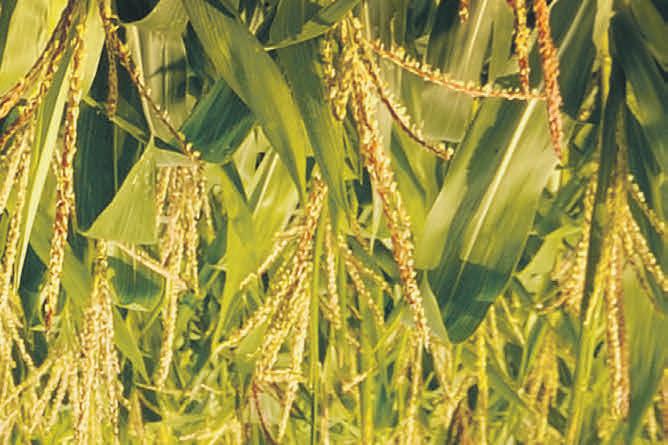

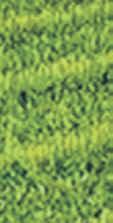























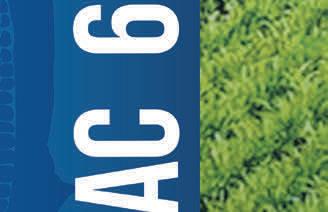


















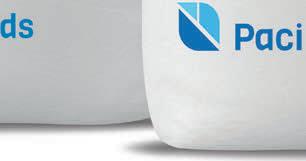
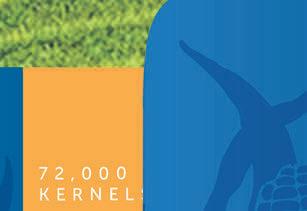
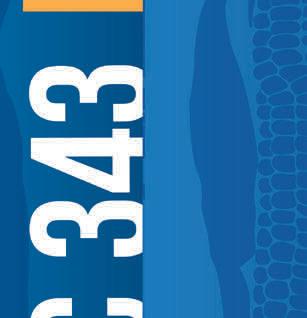
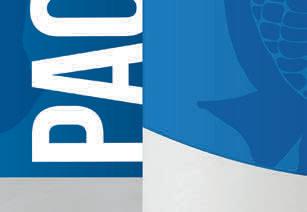


THE PASTURE Trials Network is going from strength to strength in 2023.
Executive officer Tony Butler has announced a boost in funding to support the program’s expansion, through the support of MLA Donor Company, with a total value of $3.8 million.
“We are starting to look at how PTN can deliver even more value to end users making pasture decisions; we have expanded our trial locations to cover an expanding area in South Australia, NSW, and south-east Queensland,“ Tony said.
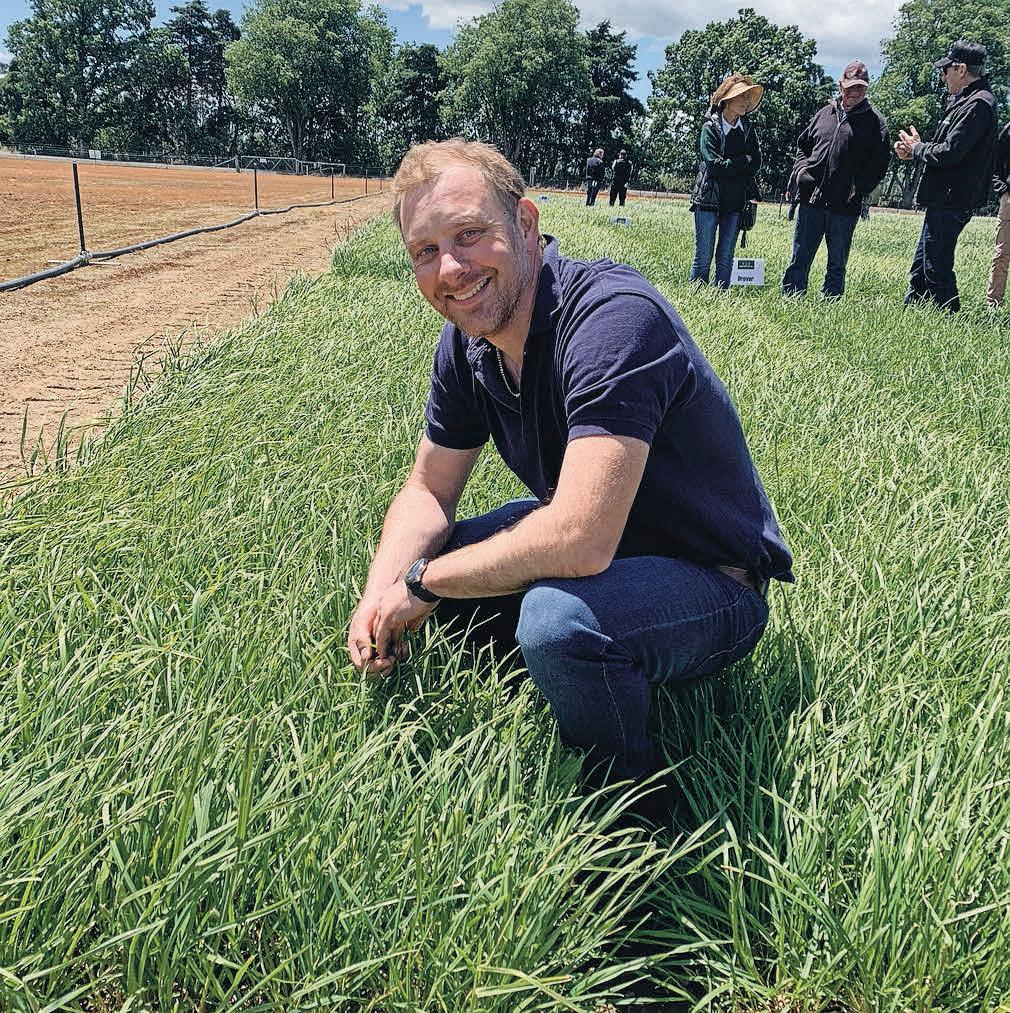
“Then, from 2024 we will look to expand even further.
“This means the Pasture Trials Network will have more data and more relevant data for more people looking to compare and find the best-performing pasture product for where they operate.”
The Pasture Trials Network is funded by participating seed companies in partnership with Meat & Livestock Australia, the Federal Government (through the MLA Donor Company) and Dairy Australia.

Allan Peake is the MLA Feedbase Program manager who brokered the new partnership.
“Producers in medium and high rainfall zones often sow improved pasture species to increase their productivity,” he said.
“The problem is that some producers are missing out by up to $200 per hectare per year because they are not choosing the best varieties.
“So we’re aiming to expand the PTN and help more producers make better decisions
about which sown pasture varieties to use.”
Tony said “we are excited to have secured funding from the MLA Donor Company for the next five years, and with the joint funding from DA and the support of pasture seed companies, we can really set a solid strategic direction and grow the program into the future”.
“This certainty in funding and industry support shows confidence in the program and allows the PTN to look at how we can develop new ways of delivering and presenting data that can be of most value to the end user,” he said.
Currently, there are more than 10 years’ worth of trial data that can be compared using the PTN e-tool on the Meat & Livestock website.
This data covers most temperate regions of Australia and most temperate pasture products available from pasture seed companies in Australia.
“There is so much valuable data currently available on the PTN e-tool, but we aren’t stopping there,” Tony said.
“We will be re-developing our Pasture Trials website, creating a central hub for all things PTN. Watch this space!

“The Pasture Trials Network has been working hard for 10 years, and our focus right now is sharing the work to-date, spreading the word that you can make smarter pasture variety choices using the data available.
“Having relevant and timely information, easily available, allows people to make the best decisions.”
Marco has large bulbs with a high bulb to leaf ratio. Marco retains its quality well in the paddock for as long as 90 days after sowing. And Marco has good clubroot resistance.
Flexible sowing date
At only 55-75 days from sowing to grazing, Marco tetraploid turnip is an extremely fast maturing turnip.
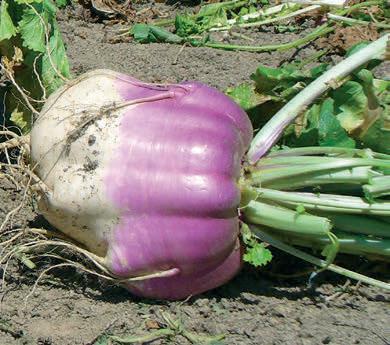

A MAJOR research trial at the Tasmanian Institute of Agriculture Dairy Research Facility aims to find practical solutions to reduce the amount of nitrogen used on dairy farms without negatively impacting milk production.
The trial is part of the Dairy HIGH 2 project and is funded by Dairy Australia.
It has been enabled by a multi-million-dollar upgrade of TIA’s Dairy Research Facility (TDRF) at Elliott in north-west Tasmania, which was jointly funded by the University of Tasmania and the Tasmanian Government.
Four farmlets or ‘mini farms’ have been established at TDRF comprising of eight

irrigated paddocks measuring about one hectare each.
Four separate dairy herds will be managed over three grazing seasons to assess the impact of different pasture compositions and varying levels of nitrogen input ranging from 300kg per hectare to no application.
The farmlets include:



Farmlet 1: Eighty per cent perennial ryegrass and 20 per cent white clover, with 300kg of nitrogen per hectare.
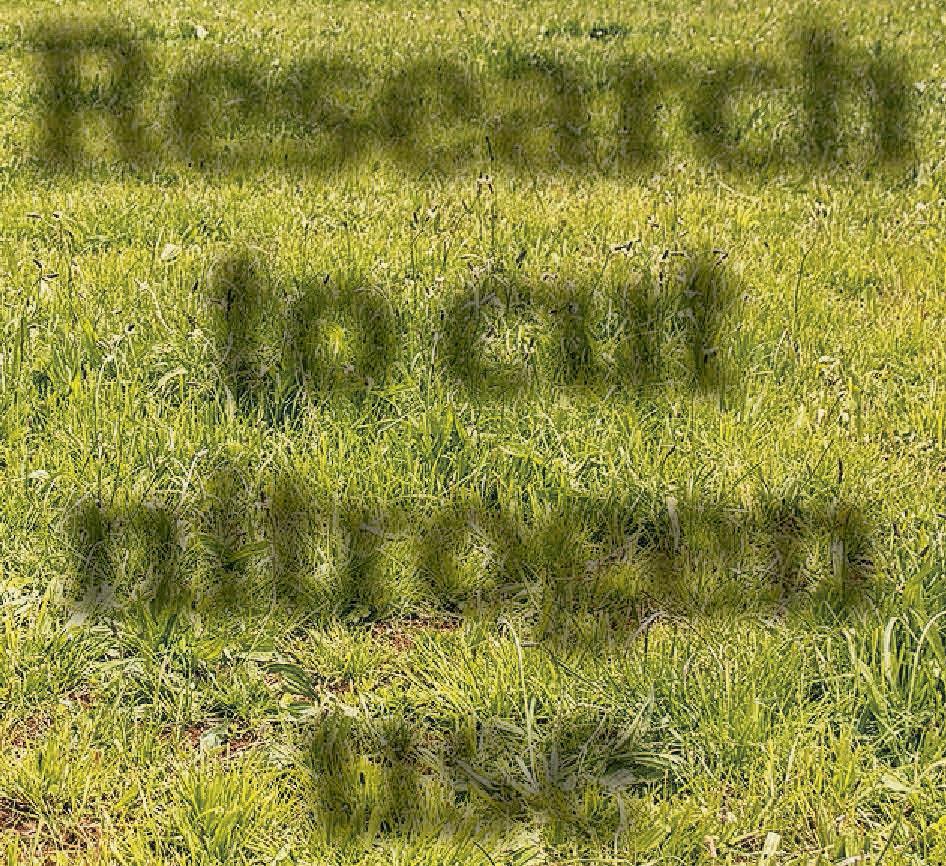

Farmlet 2: Eighty per cent perennial ryegrass and 20 per cent white clover, with 150kg of nitrogen per hectare.
Farmlet 3: Forty per cent perennial ryegrass, 30 per cent white clover and 30 per cent plantain, with 150kg of nitrogen per hectare.
Farmlet 4: Forty per cent mixed grasses, 30 per cent mixed legumes and 30 per cent mixed herbs, with little to no nitrogen application.
“This is the only site in Australia conducting this kind of grazing dairy cow research on irrigated pastures, and positions Tasmania to lead the nation in contemporary research and innovation to support this important sector,” TIA director Michael Rose said.
“This trial will generate extensive knowledge about the impact of each farmlet treatment on pasture and milk production, as well as soil health and soil carbon measurements.
“We will work closely with the dairy industry to share knowledge and enable industry adoption of findings.
“We have received strong interest since the announcement of this research project and have hosted regular visits by industry stakeholders from Tasmania, Australia and international visitors who have been impressed by the modern infrastructure that is enabling this new research.”
Professor Rose said the need for greater efficiency in the use of nitrogen fertiliser, to reduce farmer costs and limit the impact on the environment, were the catalyst for this research.
TIA is a joint venture between the University of Tasmania and the Tasmanian Government.

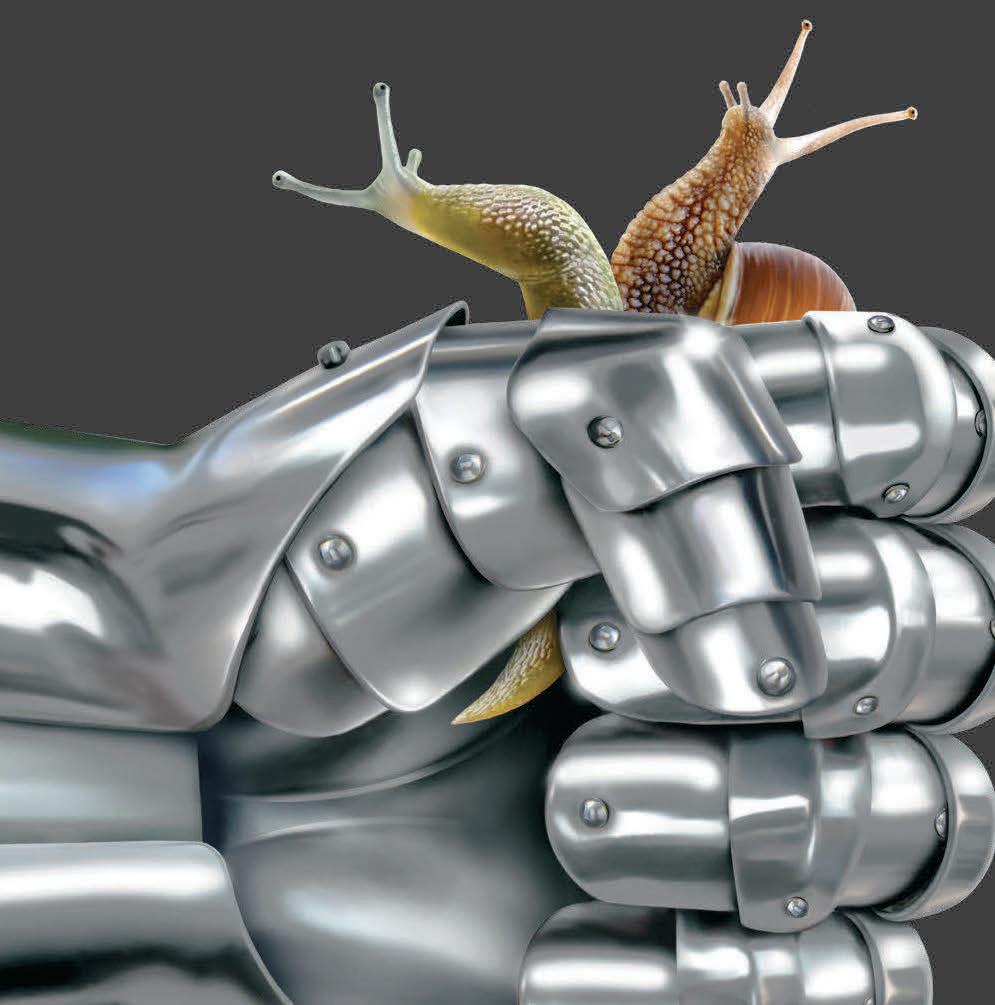 TIA technical officer Ben Noble collecting soil samples at the Elliott Dairy Research Facility.
TIA technical officer Ben Noble collecting soil samples at the Elliott Dairy Research Facility.

CHILDHOOD SWEETHEARTS turned local business power couple, Rob and Sandy Martin, are helping south-west Victorian farmers get the best out of their crops and pastures by taking to the skies.
Using the latest technologies through their aerial spreading and spraying business, Otway Helicopters, the pair helps farmers to avoid damage to pastures and soil to deliver the best results.
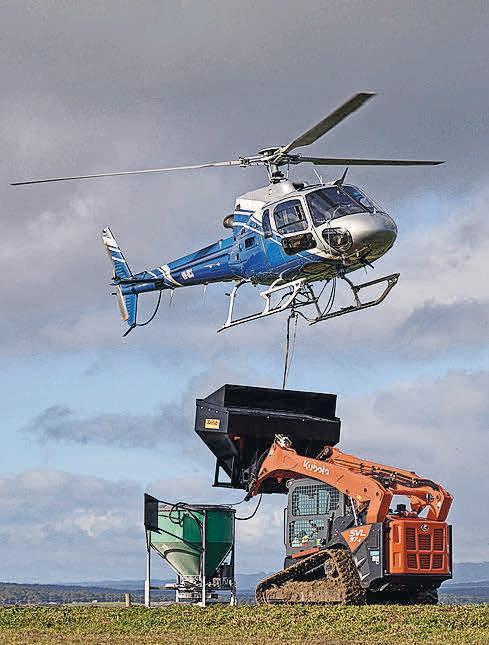
Seated behind the controls of his helicopter, Rob hovers above south-west Victoria’s rolling green hills day in, day out.
“We use a Eurocopter AS350 B2 Squirrel, which is a single-engine light utility helicopter. It’s not just a passenger helicopter, it’s a real work horse and built to lift,” he said.
A seasoned pilot, Rob has spread urea and fertiliser blends over some of the nation’s most productive farmland.
“The main reason farmers use us is because they don’t want to do any damage when taking tractors through their pastures,” he said.
ultra fine 20 micron particles in every granule means 100% efficiency for faster results than traditional bulk products.



Whether you are using Ozcal Lime for pH adjustment or Ozgyp gypsum to improve soil structure, a quick robust result will give immediate benefits to your pasture/crop. It has also been proven that fast reaction of ultra fine particles does not come at the expense of long term results.



“It’s a wet climate in the Western District of Victoria so there’s a lot of rain in the wintertime, meaning softer ground.
“If you send a tractor through that paddock to spread fertiliser, you’re looking at damage to the soil from wheel marks and an overall loss of production. Aerial spreading takes that completely out of the equation.”

Rob and Sandy have known each other nearly their entire lives. Growing up on neighbouring properties, agriculture runs through their blood.
“We were both raised on dairy farms in the same district. I always knew I wanted to work in agriculture, so I left school at 15 and did just that,” Rob said.
The pair briefly went their separate ways when Sandy’s family went up north to work on cattle stations.
But it wasn’t long until they were reunited when Rob found himself working on the same cattle station as Sandy in his early 20s. What began as a childhood friendship soon blossomed into romance.
“Our lives rekindled and we moved back down south, got married and started a family together.”
They returned to familiar territory, starting a dairy farm in Victoria’s south-west.


“We worked in the dairy industry for about a decade but the drought at the time almost finished us off, it was so tough,” Rob said.
With two young children, Rob and Sandy were determined to find a steady income. Armed with a helicopter licence and a lifetime of farming expertise, the pair took a punt in 1997 and started Otway Helicopters.
While Rob takes care of business in the clouds, Sandy manages operations from below, ensuring everything is where it needs to be.
“In the morning we send the trucks filled with fertiliser off to the farms we are servicing that day,” Sandy said.
“Then we need to transfer the fertiliser into the bucket that will hang from the helicopter. It has to be the exact amount required per hectare, so it’s really important we get it right.
“When Rob flies in we have everything ready
“We were using old and slow machinery to shift the fertiliser into the buckets and it was slowing down our work,” Sandy said.
“Our friends down at AgriMac Warrnambool convinced us it would be the best investment for our operations and overall business,” Rob said.
“I was reluctant to try out a new piece of equipment at the time, to be honest, but they were a massive support in finding the right machinery and after the first day we were hooked.
“Having the Kubota Track Loaders has made our operations flow and we can move from farm to farm quicker.
“Damo and the AgriMac team have given us so much guidance with setting up the equipment, and the ongoing support to maintain our machinery has been incredible. They’ve taken the hassle out of it all.”
“They also showed us how to use the Kubota technology to weigh the exact amount of fertiliser required per hectare. It’s helped us get the highest yields and best results for our clients,” Sandy added.

Like the thousands of pastures the pair have tended to over the years, Rob and Sandy pride themselves on their growth.
“We’ve worked with some of the same families since the very beginning. We’ve seen their kids grow up and they’ve seen ours,” Sandy said.
“But we have also been fortunate enough to work with new clients and we hope that continues.”



For a high yielding, multi-graze forage rape, it is hard to go past Pillar forage rape.
Pillar is a new, fast establishing, giant type rape, with very good winter hardiness and excellent re-growth ability, enabling multiple grazings potential. Pillar is palatable and can be used for all livestock types and farming systems.
BENEFITS:
Leafy, giant-type multi-graze forage rape
Very fast establishing
Very high yield potential
Very good re-growth potential
Good disease resistance
Can be sown in spring or autumn
Suitable for sheep, beef and dairy cattle
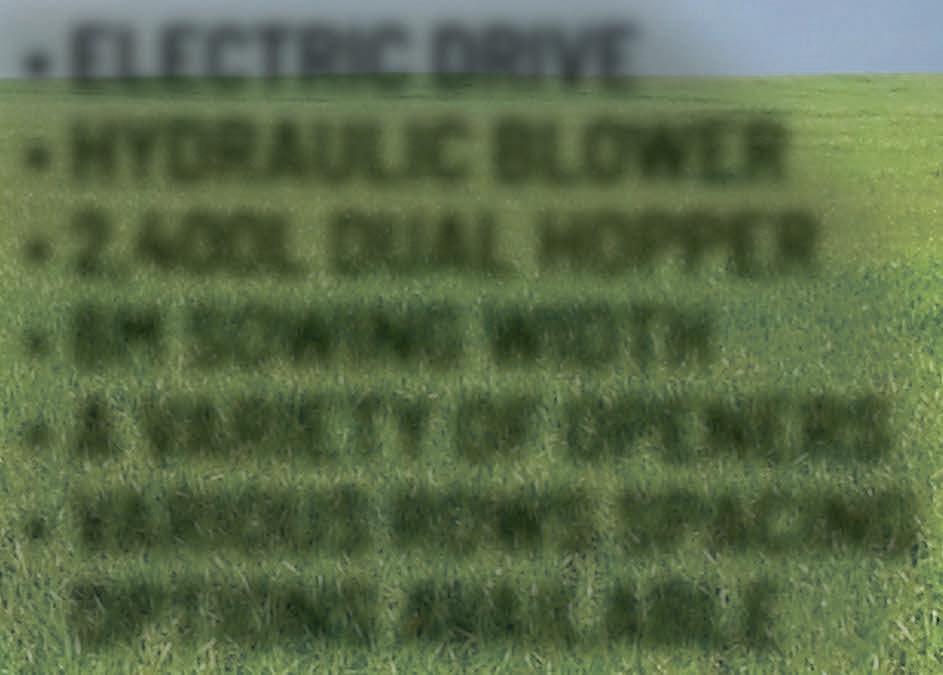
AN INFLUX of KUHN farm machinery implements took Toowoomba by storm at the 2023 KUHN Expo.
KUHN Australia hosted its expo on a local property, showcasing more than 50 of its farm machinery implements to dealers and customers from across Australia.
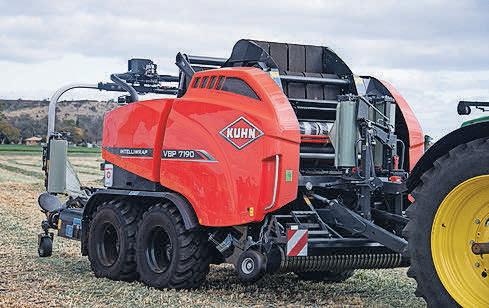
With more than 350 registered attendees across the two-day event, event organisers were thrilled by the attendance at the first KUHN expo to be staged in Queensland.
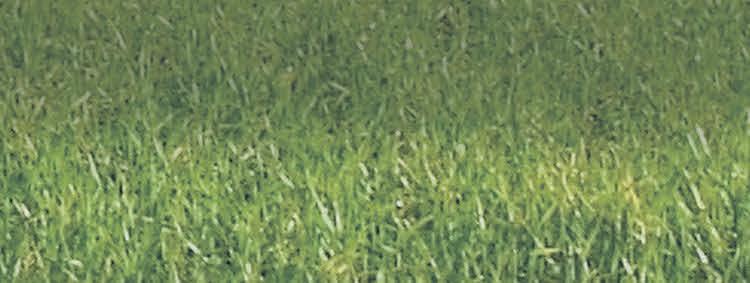
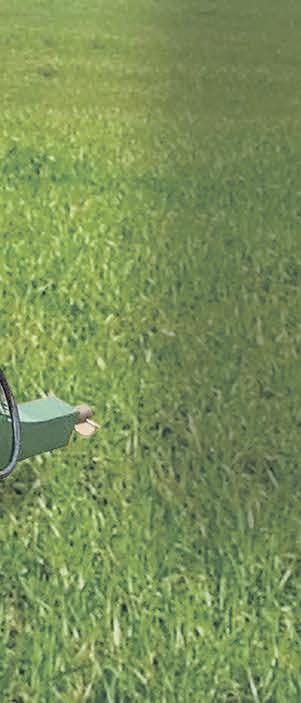
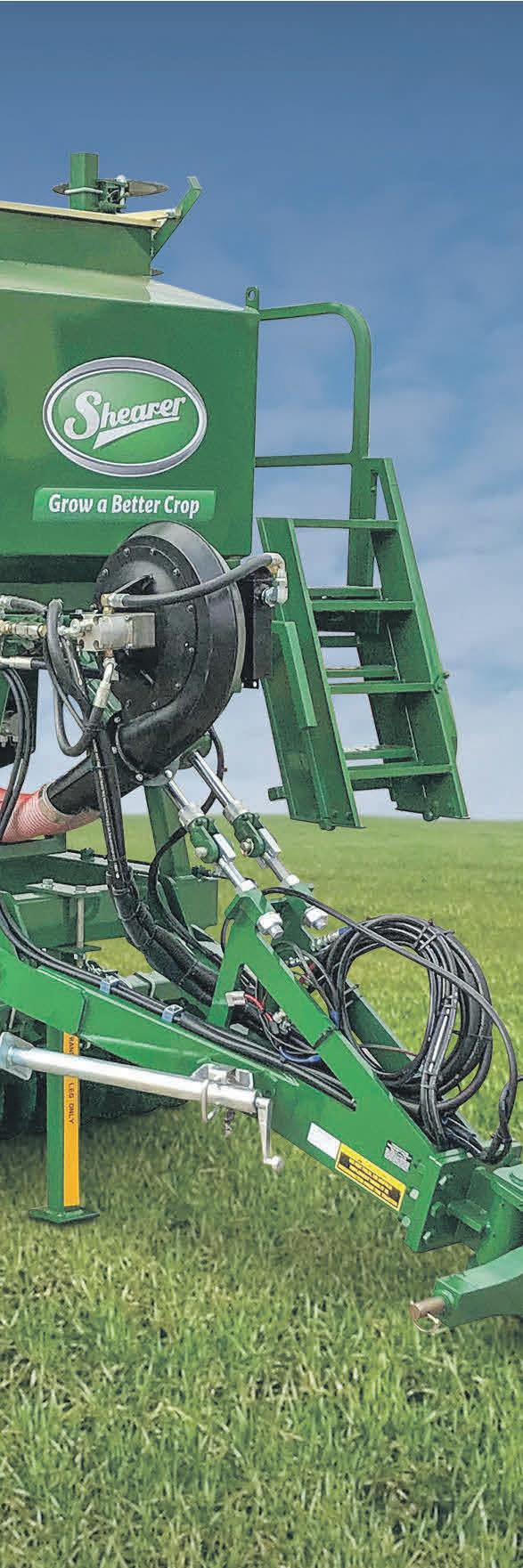

“Bringing dealers and customers together every few years to network and showcase our

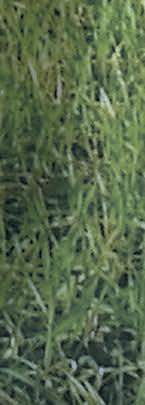
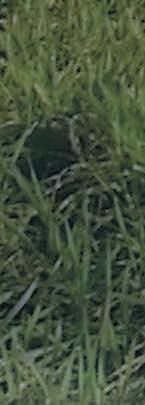






































vast range of machinery is the highlight of our calendar,” KUHN Australia’s managing director Bruno Fetiveau said.
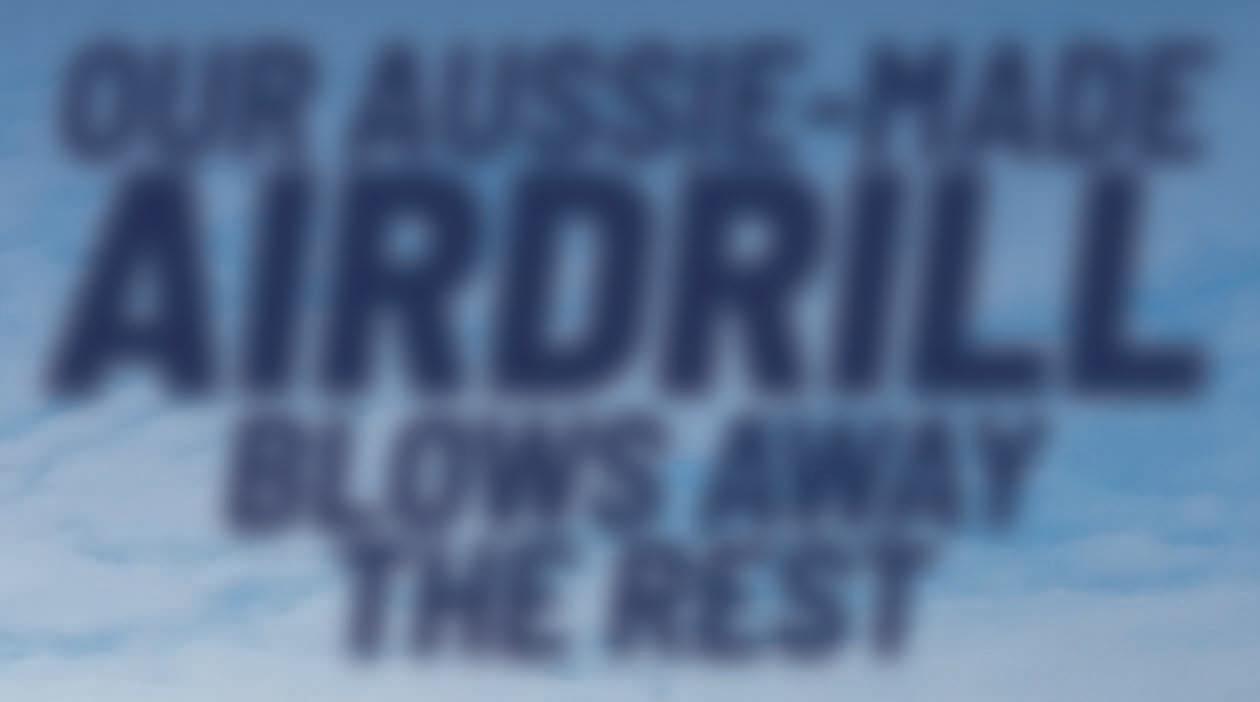




Expo attendees saw impressive live demonstrations, machinery displays, product workshops and presentations on KUHN’s cutting-edge hay and forage, tillage, spraying, spreading and feed mixing led by KUHN product specialists.


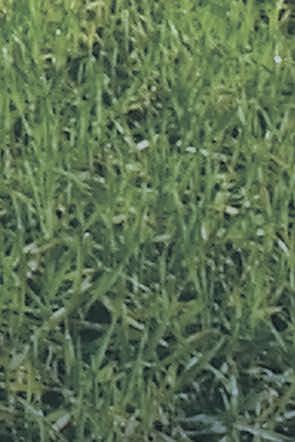


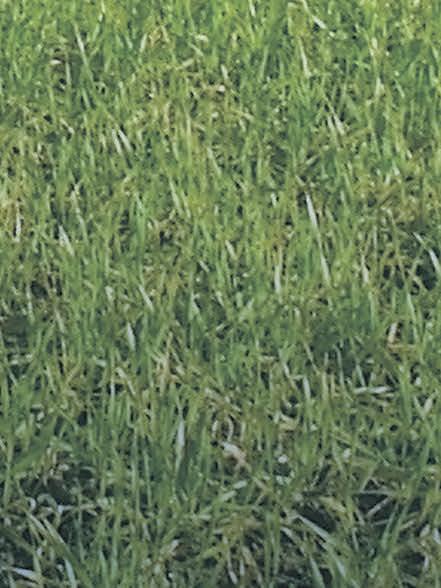
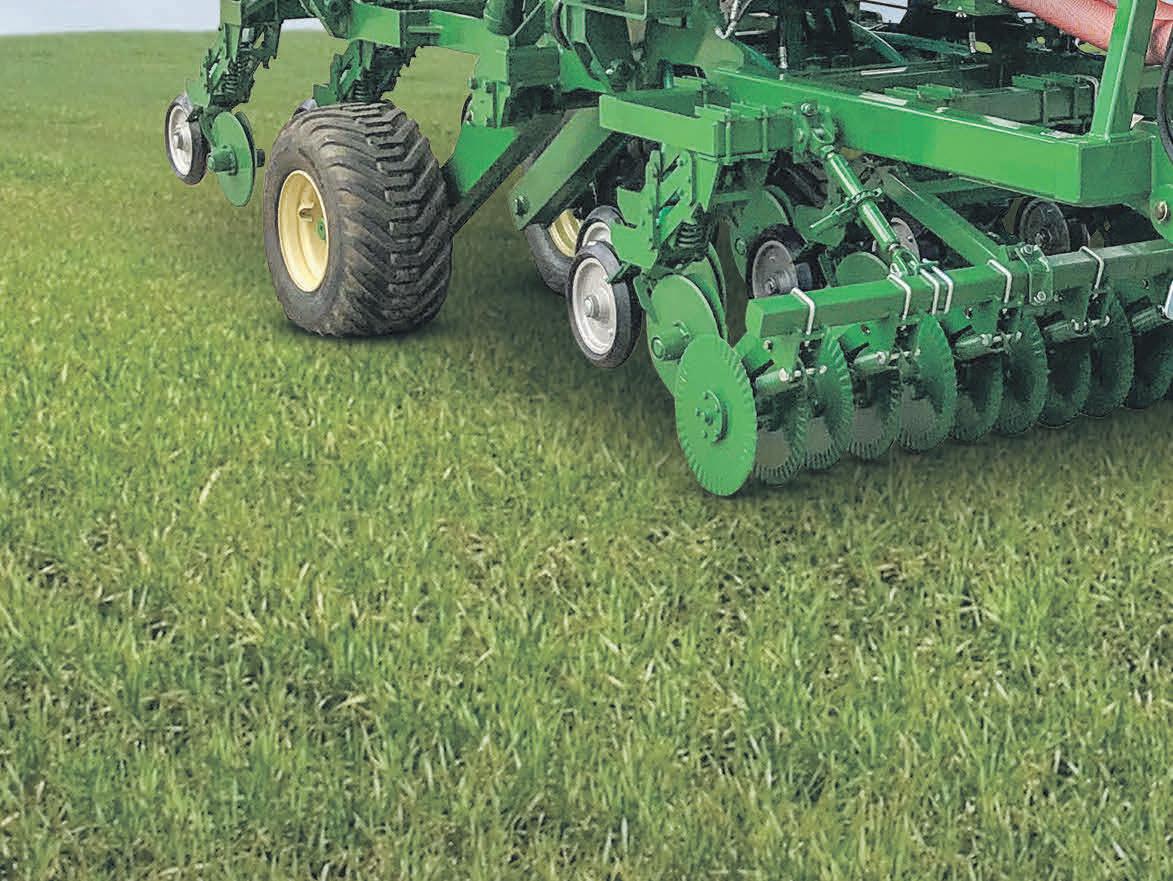

Attendees were also invited to take part in the KUHN Expo silent auction of the demonstration machinery.
Twenty-two demonstration machines were available to purchase on the final day of the event, where a portion of proceeds were donated to the mental health support organisation Are You Bogged Mate led by Mary O’Brien.
Among the extensive selection of implements at the expo was KUHN’s VBP 7190 round baler wrapper combo, on display for the first time in Australia.
Also on display for the first time were KUHN’s new mower conditioners. The FC 13460 RA and FC 9330 RA mower conditioners have been designed to optimise output and quality with an integrated swath grouper.
“The live demonstrations are a unique opportunity for the crowd to see the machines working in optimal working conditions,” KUHN Australia marketing manager Michael Murer said.



KUHN also had global product experts and international KUHN factory experts from France and The Netherlands in attendance.
 KUHN’s VBP 7190 round baler wrapper combo, on display for the first time in Australia.
Also on display for the first time were KUHN’s new mower conditioners, including the FC 9330 RA.
KUHN’s VBP 7190 round baler wrapper combo, on display for the first time in Australia.
Also on display for the first time were KUHN’s new mower conditioners, including the FC 9330 RA.

These representatives provided exclusive industry insight to the dealers and customers on KUHN machines and the future of farm machinery.
This year’s KUHN Expo was supported by industry partner Tama Australia, who provided the silotite film and twine for the hay and forage demonstrations.
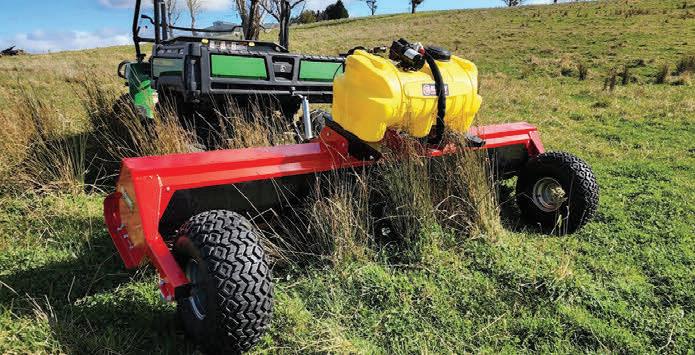



“The 2023 KUHN Expo has been a tremendous success. As the world’s largest farm implements manufacturer, the expo is an opportunity for us to share knowledge with dealers and customers,” Mr Fetiveau said.

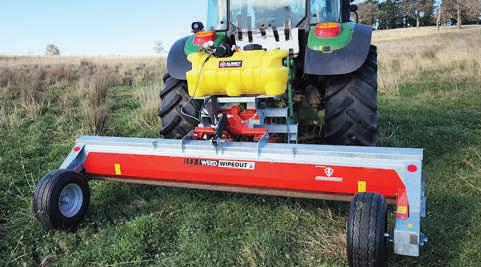






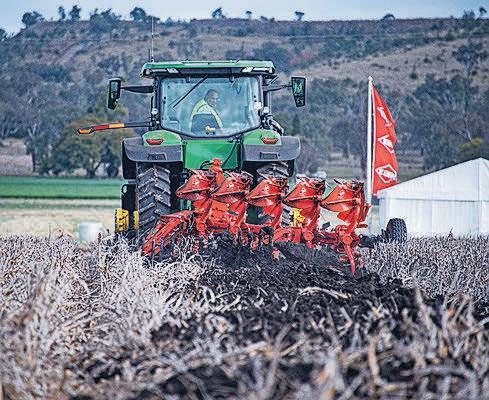
For more information and to learn more about KUHN, visit: www.kuhn.com.au
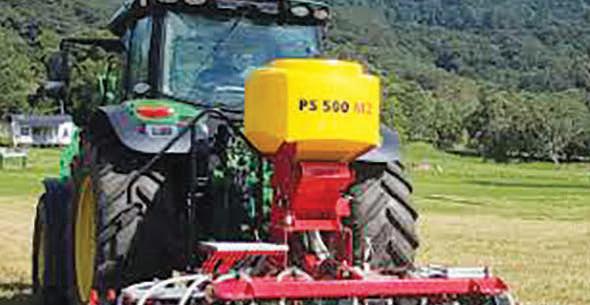
AWARD-WINNING DESIGN, unique features, a reduced number of operator inputs and a focus on minimising their environmental impact are just some of the qualities of Case IH’s current baler ranges as producers look to the hay season ahead.
Among the most popular balers in the current Case IH line-up are the large square balers — the LB434XL and LB436HD — and the variable chamber round balers — the RB455 and RB465 — which have been the focus of ongoing improvements since they were launched into the Australian and New Zealand markets.

“All these models have proven very popular with customers, thanks to their wide range of features, a number of which are unique to CNH Industrial balers, and their ongoing development and improvement over time,” Case IH Australia/New Zealand product specialist Andrew Wood said.
“What we have now are very efficient and reliable balers that produce bales with excellent shape and density in a wide range of conditions, with an emphasis on productivity and performance.”
He said one of the key features of the large square baler range was the CNH Industrialexclusive TwinePro knotters, delivering zero twine off-cuts, which over about 10,000 bales eliminated about 3000 metres of twine off-cuts that would normally be left in the field and/or lost in transport.
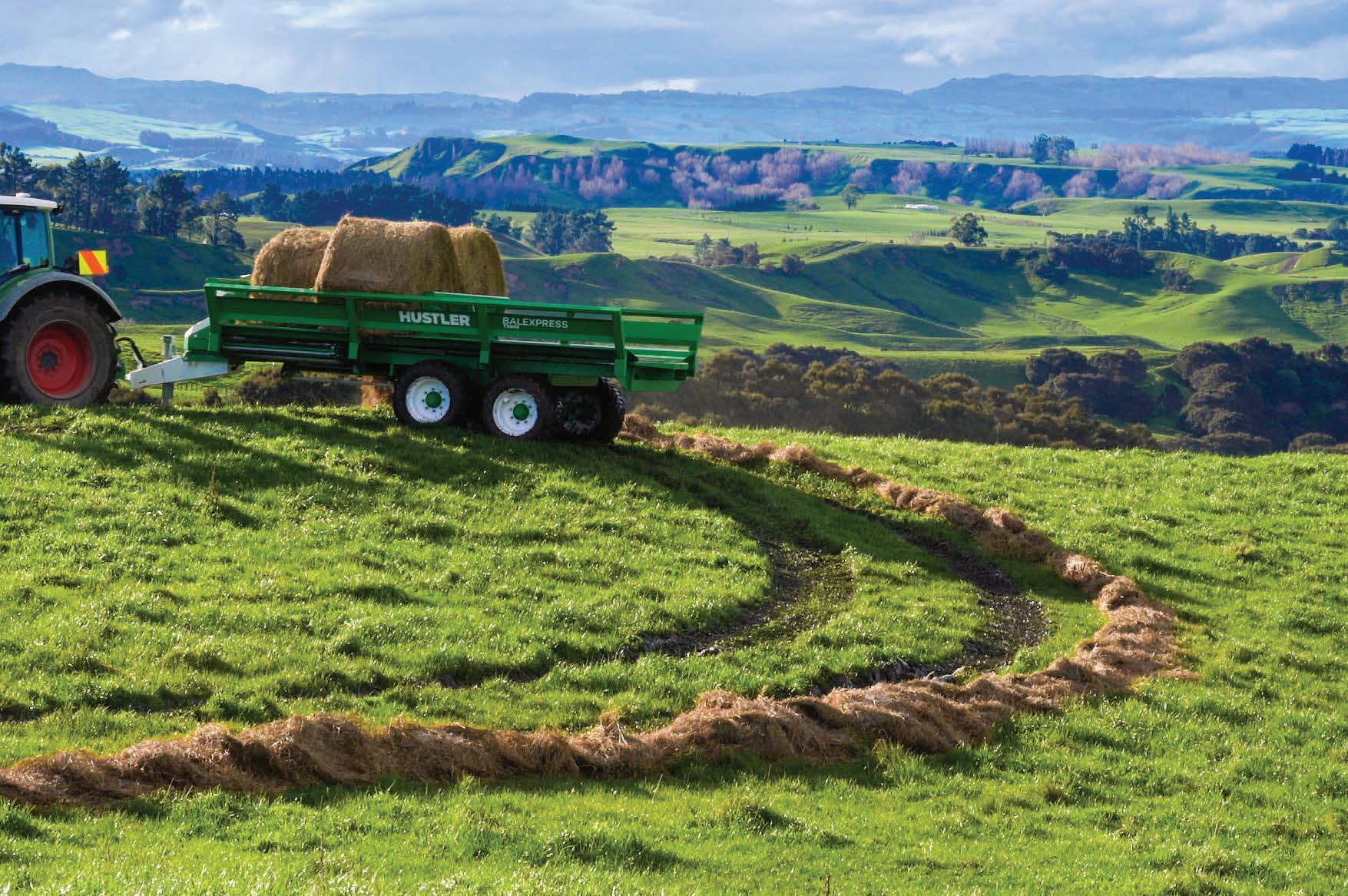
The tensile strength of the tied twine produced by the TwinePro knotters is also


significantly increased, providing up to a 30 per cent increase in tensile strength, allowing denser bales to be produced with a reduced risk of twine breakage.


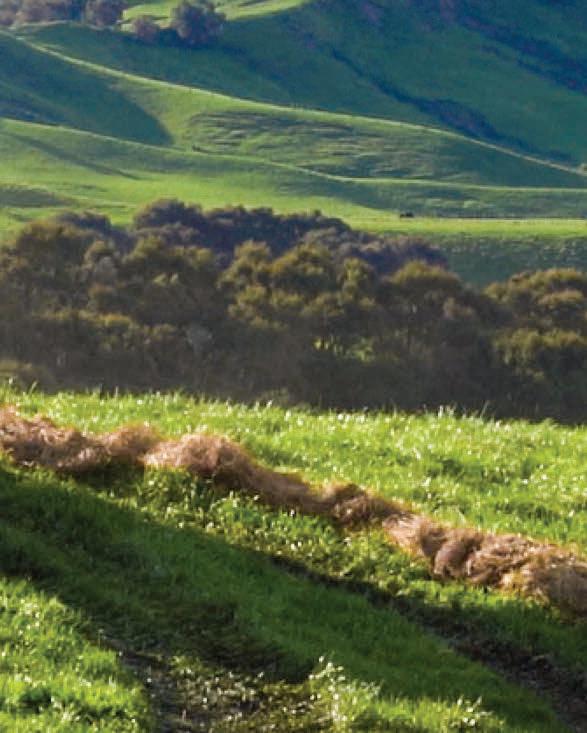


Both the LB434XL and LB436HD are also ISOBUS Class 3-compatible which, when coupled to a suitably equipped and unlocked tractor, allows the baler to control the tractor’s

1) Next-level versatility
Feeds rounds or square, tight or loose - BaleXpress feeds out any type of bale
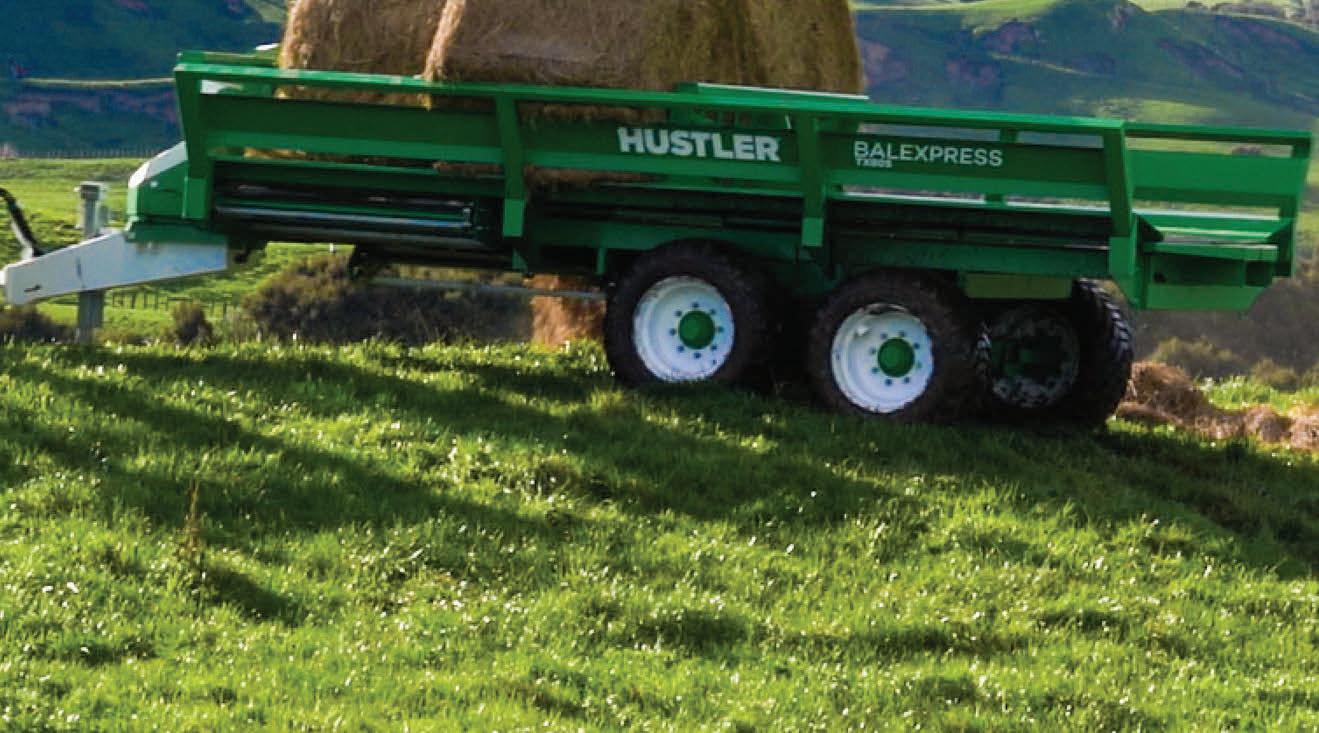
2) Easier, faster & more convenient loading

Fewer trips & fewer movements - BaleXpress will save you time and energy
3) Compact design
A big machine in a compact form is easier to manoeuvre and navigate gates and tight corners - also easier to load from either side or rear
4) Simplicity & reliability
Fewer moving parts means fewer points to break down, so BaleXpress has been designed for maximum efficiency with less maintenance
ground speed to have the units operate more productively and consistently.
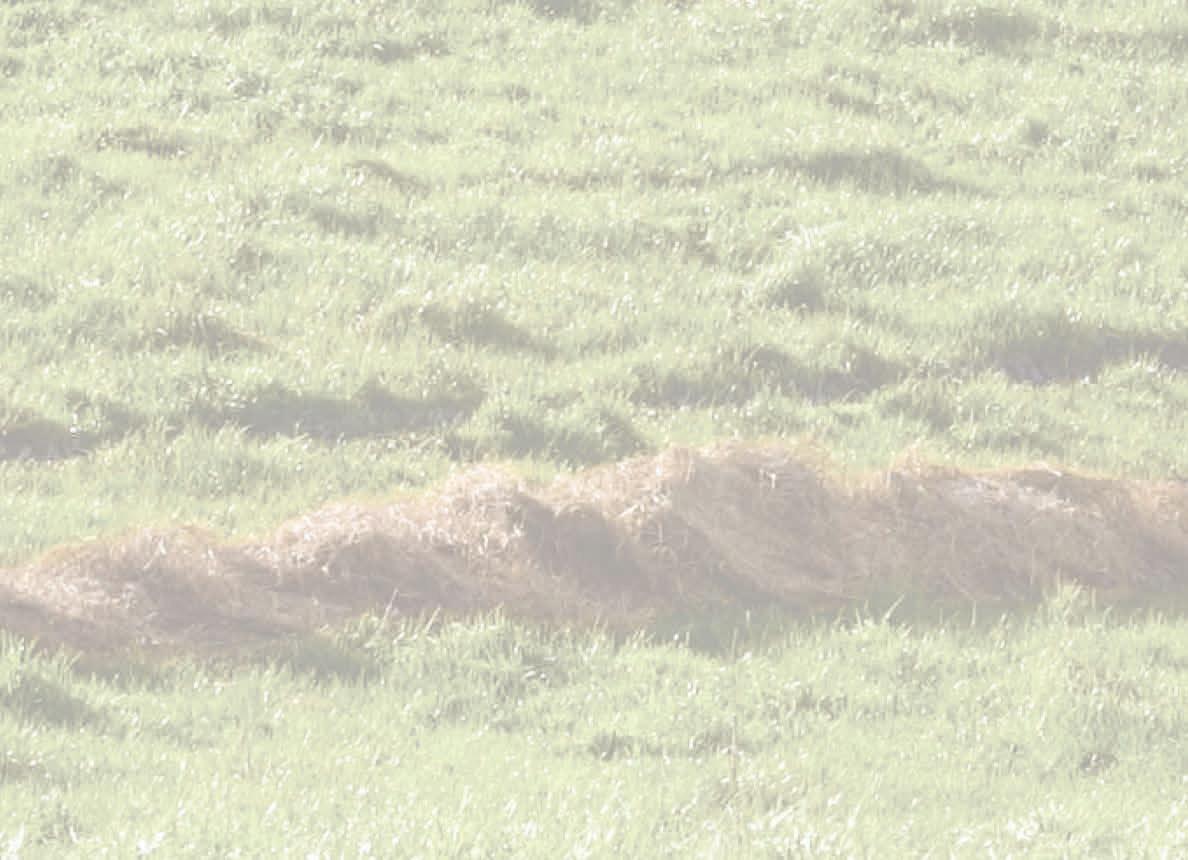
“Depending on the model and which settings are selected, this feature has been designed to deliver more throughput and a more consistent bale shape. There are also the added advantages of reduced fuel consumption and operator fatigue,” Mr Wood said.
The LB436HD also features the awardwinning, and CNH Industrial-exclusive, twospeed powershift transmission which offers a host of advantages.
The RB5 Series round balers first hit the market in 2014, and Mr Wood said its evolution had contributed to its position as an industry-leading product in this sector.
“It’s characterised by its efficiency and ease of operation, with one of the simplest and most effective net wrap application systems on the market being just one example of this,” he said.
“Like its large square cousins, our round balers are also ISOBUS Class 3-compatible, which, when coupled to a suitably-configured and unlocked tractor, can stop the tractor, apply the net wrap, open the tail gate and close it again once the bale has rolled out.
“We’re always striving to simplify and improve the overall operator experience, so features like this mean even less-experienced operators can deliver great results without having the experience you may ordinarily require.”
ɋ For more information on the Case IH baler range, contact your local Case IH dealer.

